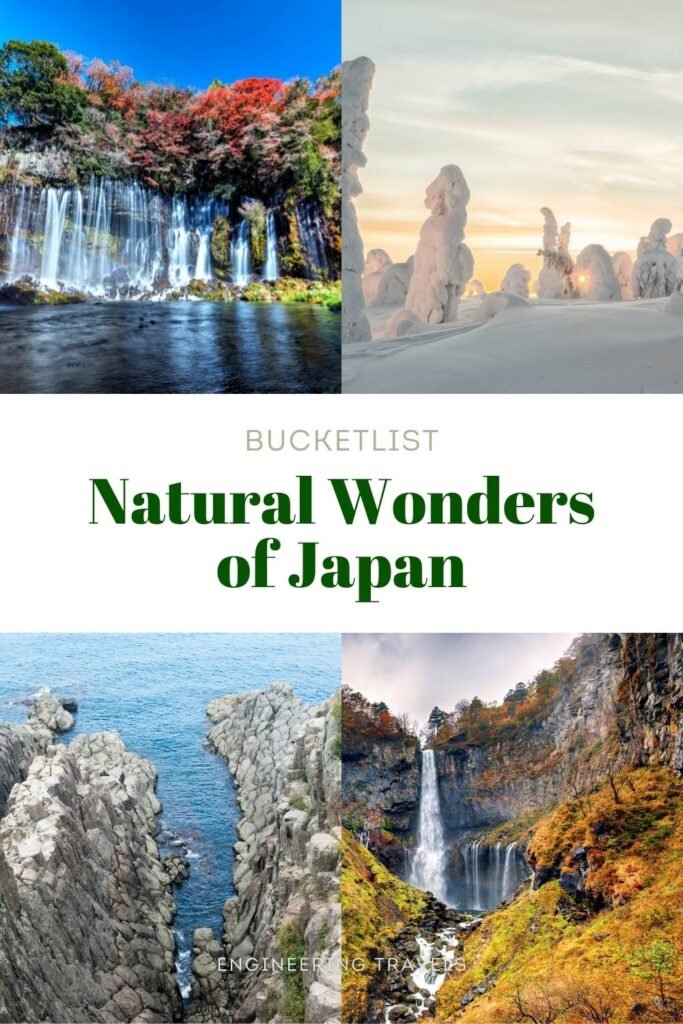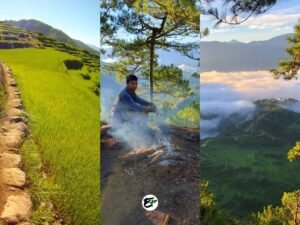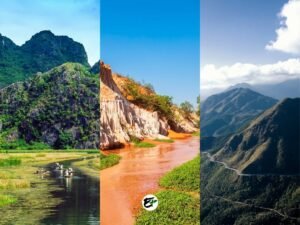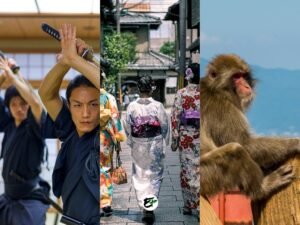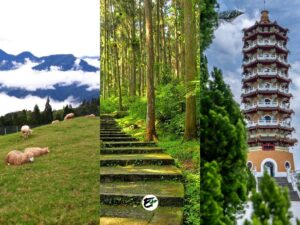30 Natural Wonders of Japan to Visit for Every Region
Undeniably, Japan is a country of beauty. It is filled with amazing experiences ranging from cuisine to technology, culture to nature. Upon discovering that Japan is home to stunning mountains and lovely lakes, I realized that it has even more spectacles to offer.
Here in this article, I aim to share the natural wonders of Japan that are worth visiting. I will guide you from the north to the south of Japan, region by region, highlighting the natural attractions you can explore. For your convenience, I have included the Google map locations of these attractions, along with some interesting facts to acquaint you with them.
If you’re curious about how I discovered these beautiful places, the answer lies in the Instagram profile @visitjapanjp. I spent considerable time exploring almost four years of their feed to compile this list of beautiful locations. For your information, the first photo on this account was posted on October 2017.
This post contains affiliate links. I may receive a tiny commission at no additional cost to you.
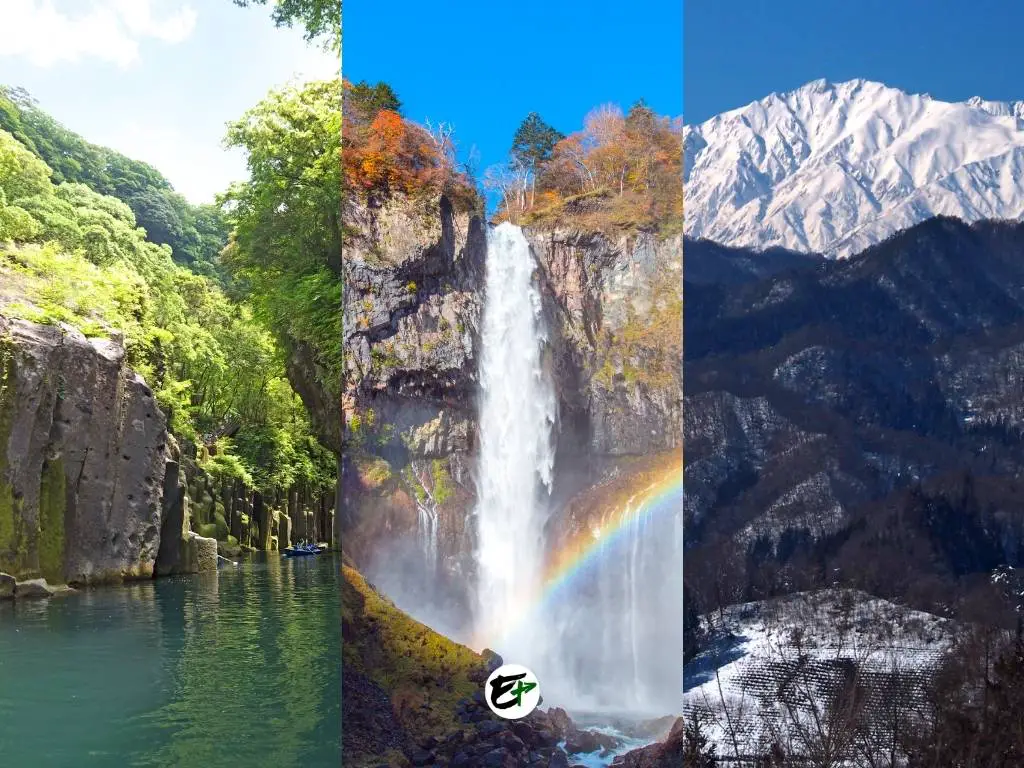
Use the table of contents to skip to topics.
Check out my other articles about Japan.
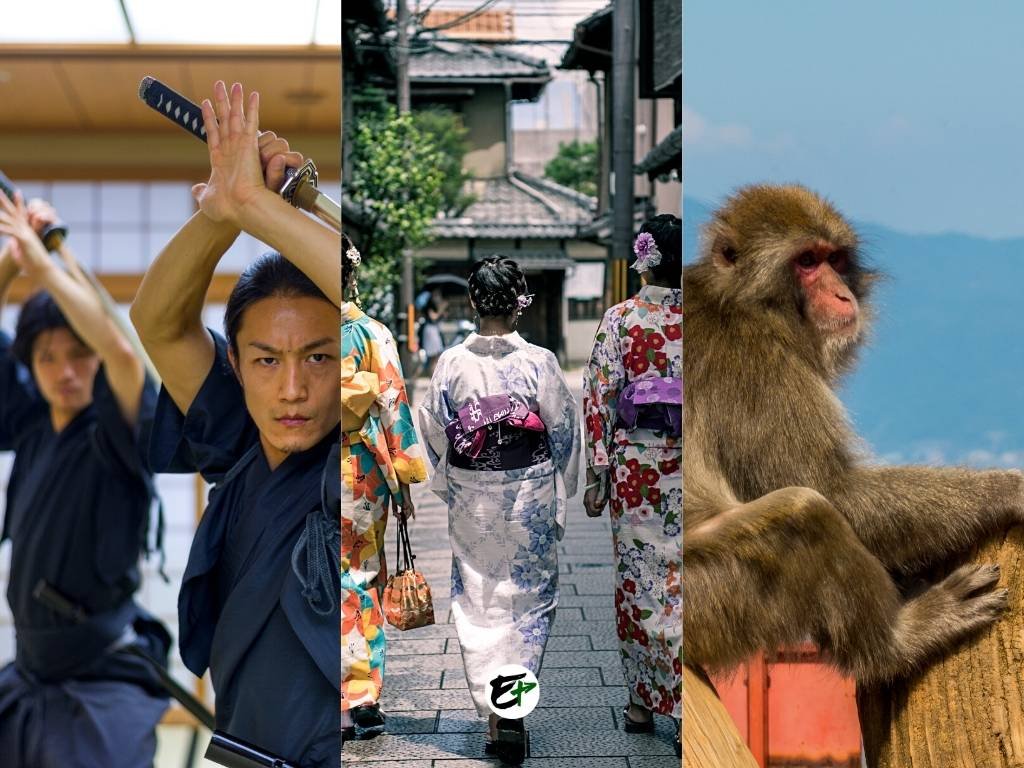
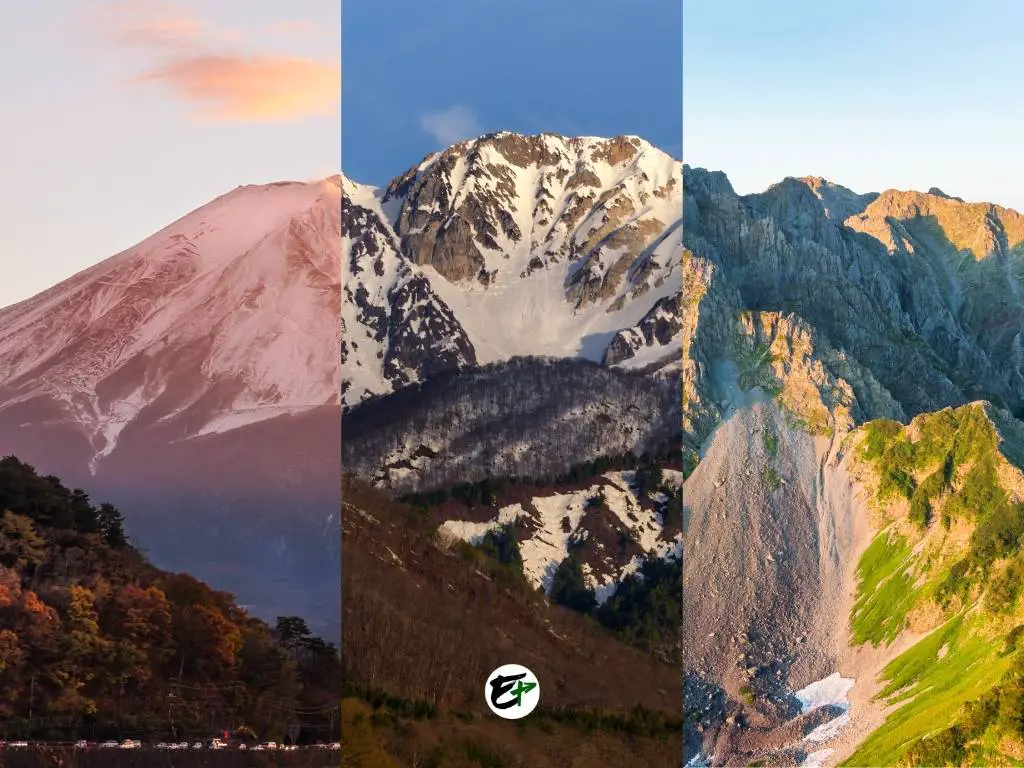
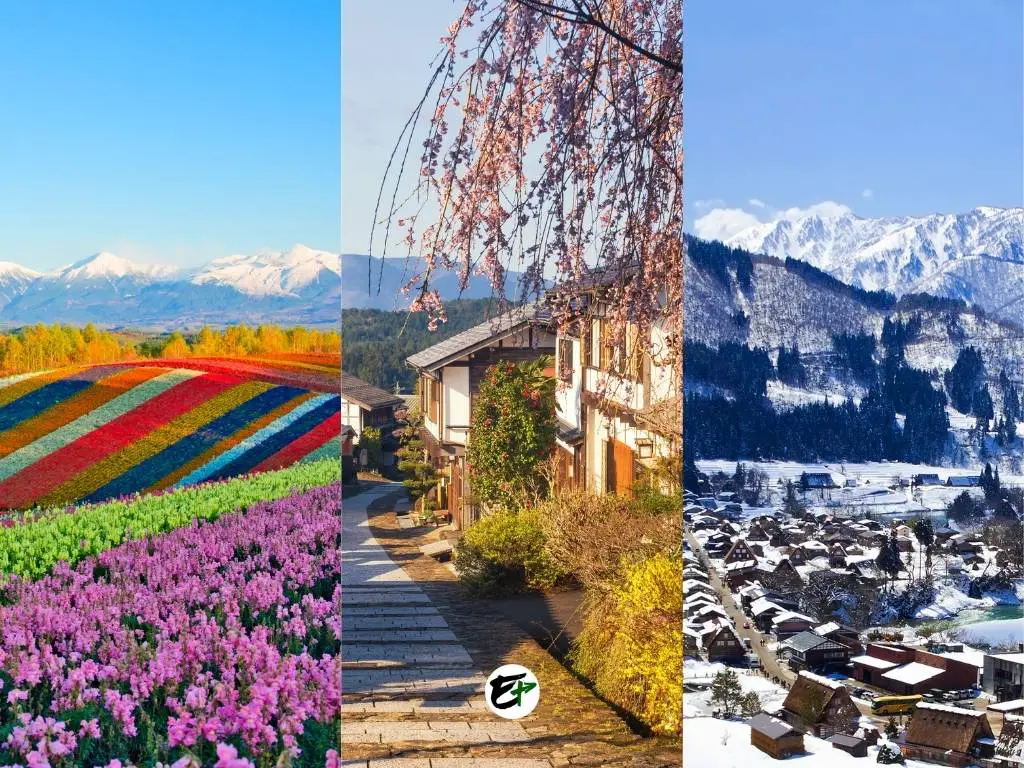
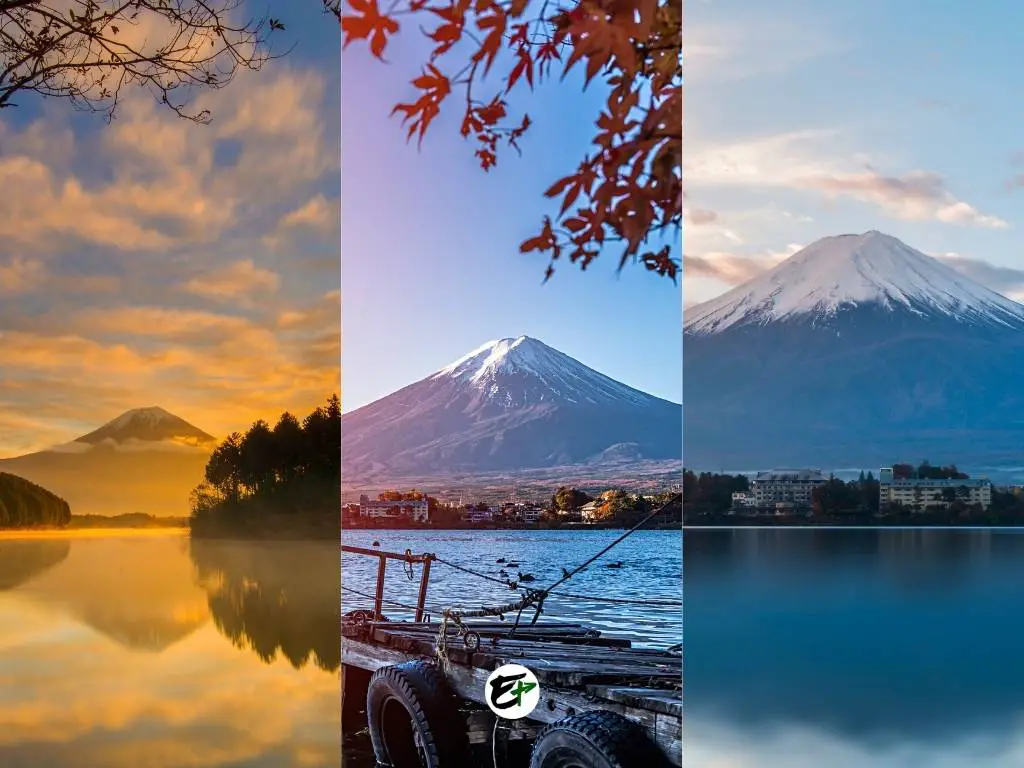
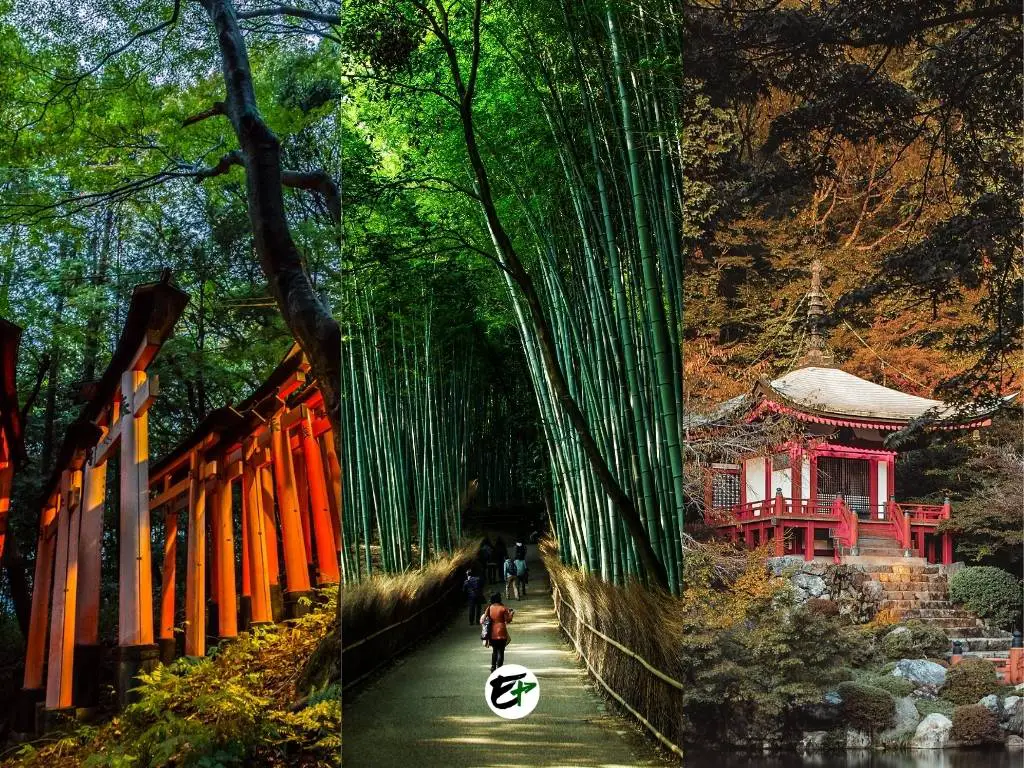
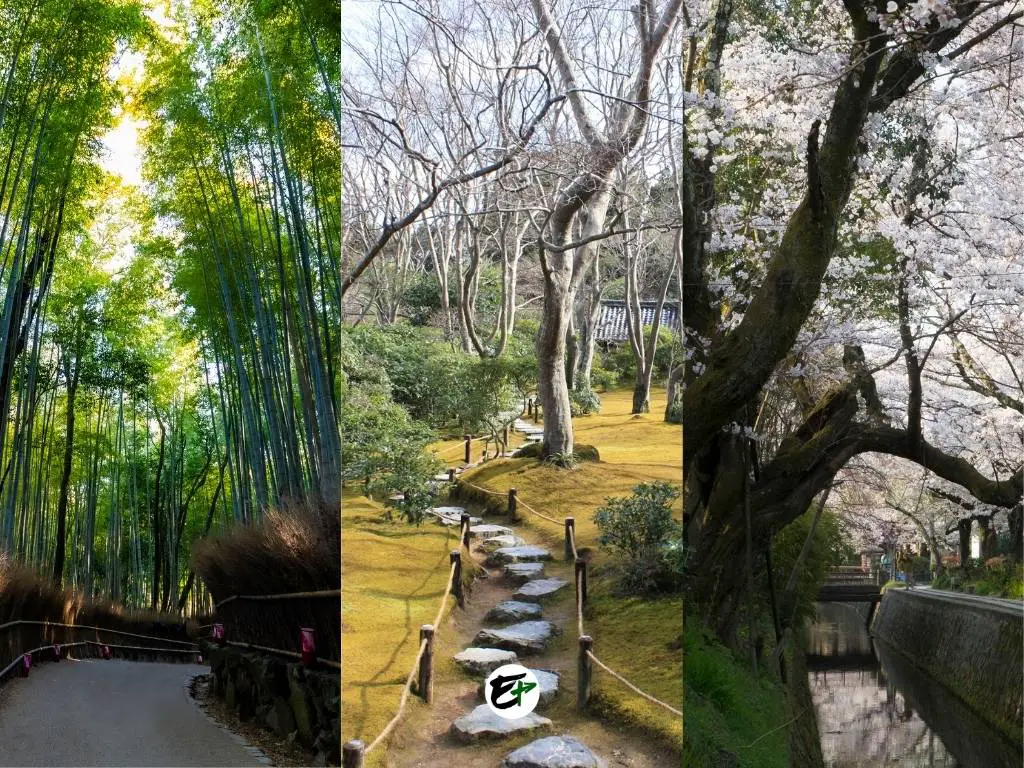
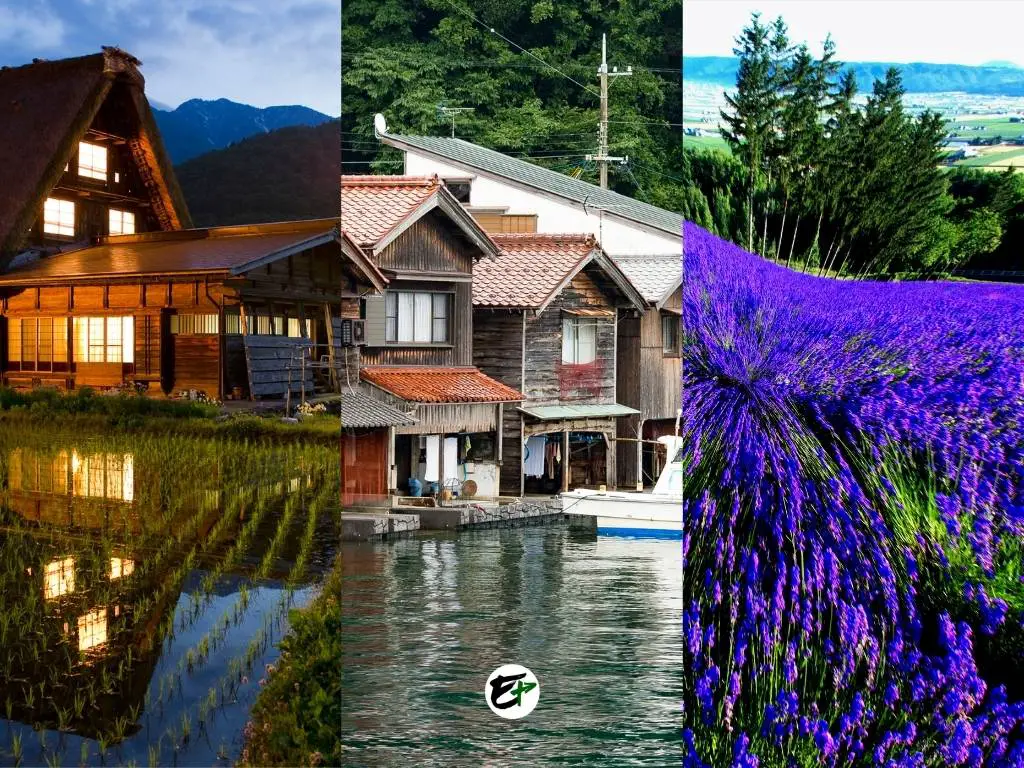
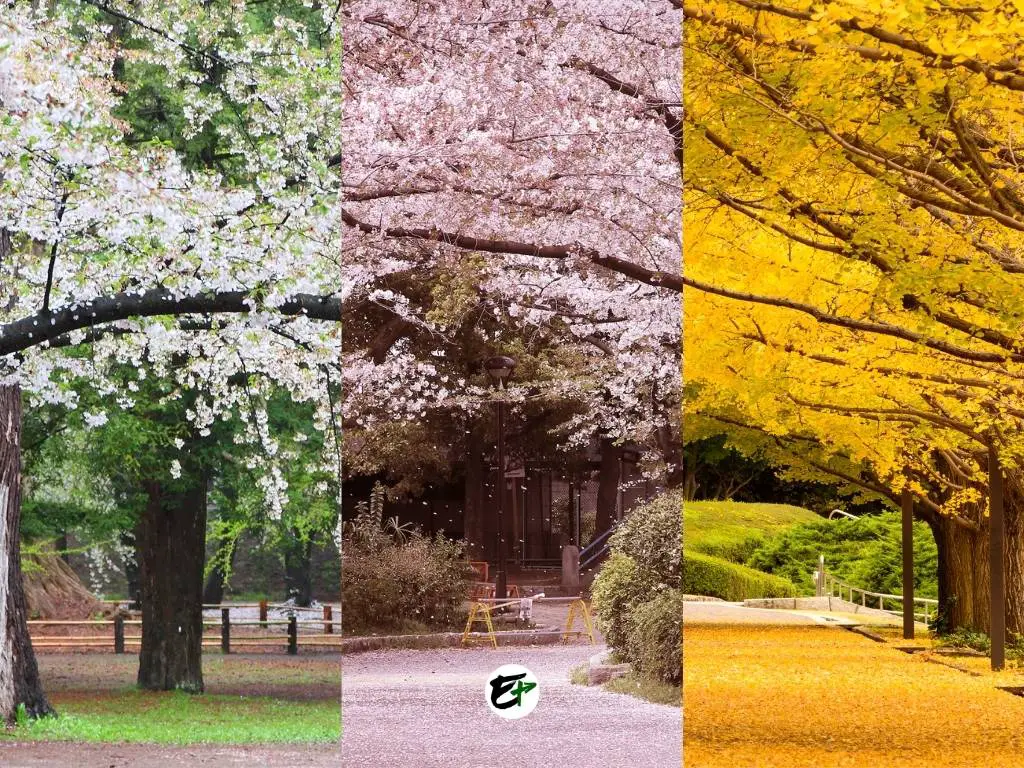
Planning to visit Japan? Find the best hotel deals and discover various amazing activities now.
Natural Attractions and Wonders of Japan in Hokkaido
Let’s begin our journey in Hokkaido, the region that sits at the very top of Japan.
In my view, there are five natural wonders here that are simply too beautiful to miss. First on the list is Jewelry Ice, a spectacle that is as captivating as it sounds. Next, we have the Unkai Terrace, a place where you can feel like you’re walking among the clouds.
The third wonder is Jigokudani, a valley that vividly showcases the raw power of nature. Following this, we find ourselves at the Coast of Shakotan Peninsula, a place of breathtaking coastal beauty. Finally, we arrive at the Shirogane Blue Pond. Its ethereal beauty is something that stays with you long after your visit.
More information about Hokkaido
Hokkaido is also the region of Japan is recognized for its stunning wilderness, powder snow, delectable seafood, and fascinating indigenous culture. This location is a favored destination for winter sports such as skiing and snowboarding, with renowned resorts like Niseko, Rusutsu, and Furano.
Sapporo, Hokkaido’s principal city, is celebrated for its local beer, unique ramen, and the annual Sapporo Snow Festival. The mild summers of Hokkaido offer a respite from the humidity of Japan, making it an ideal location for hiking and exploring the numerous National Parks.
The island is also the residence of the indigenous Ainu people. Their rich culture and traditions can be experienced at Lake Akan.
Jewelry Ice in Otsu Beach
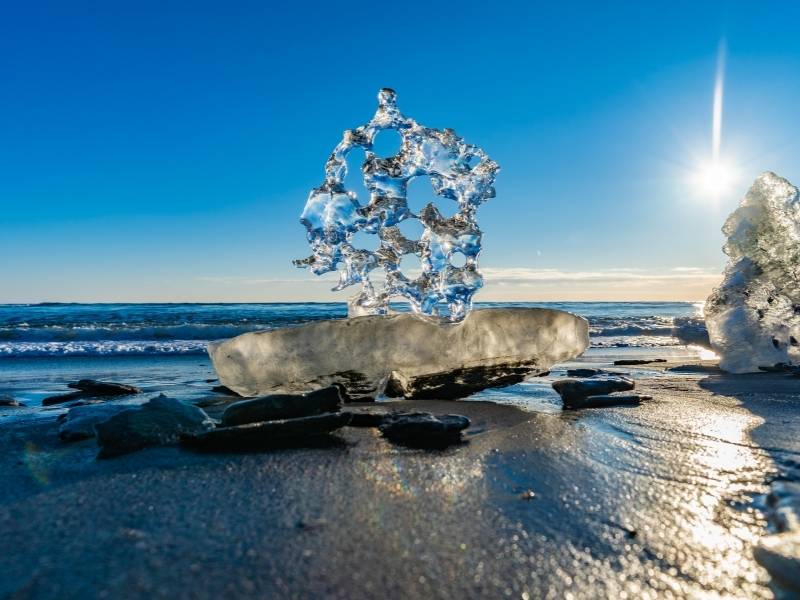
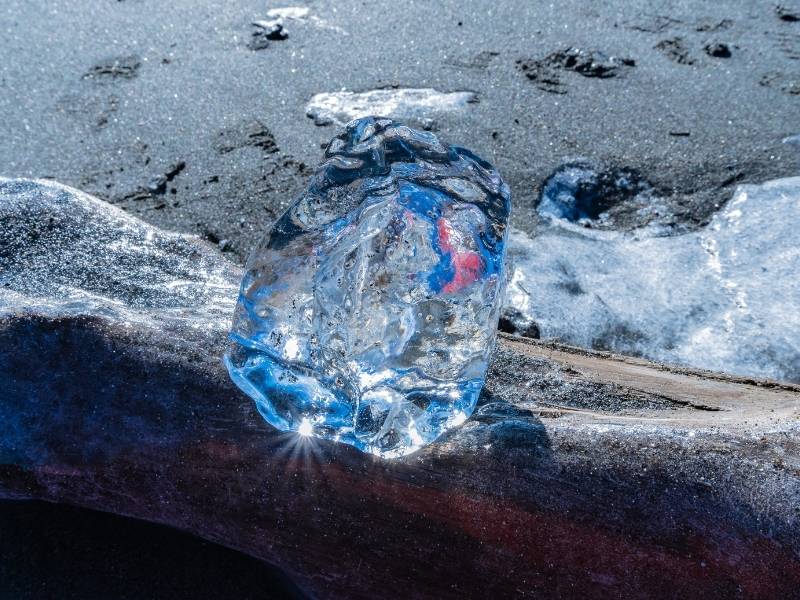
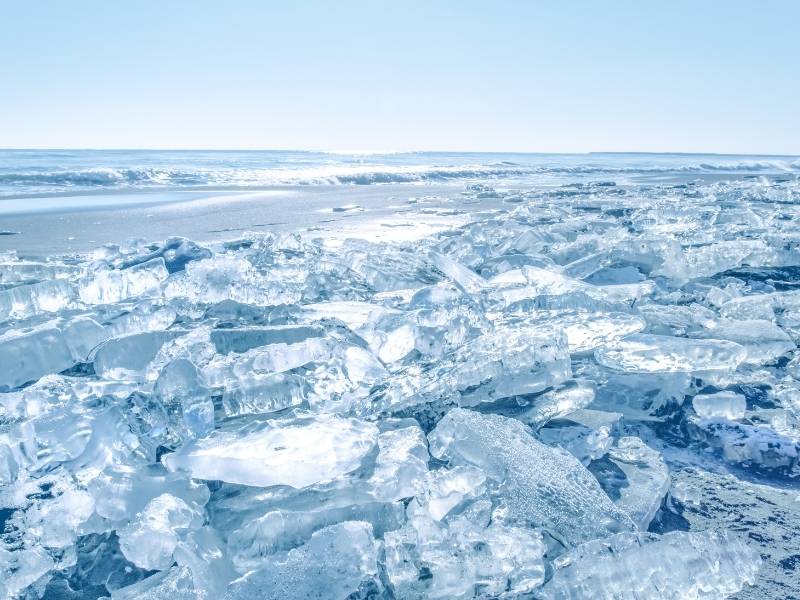
Location: Otsu Motomachi, Toyokoro, Nakagawa District, Hokkaido
Jewelry ice is a phenomenon that occurs during the cold winters in Hokkaido. The frozen Tokachi River breaks into chunks of crystallized ice due to temperature variations.
These chunks of ice then flow into the Pacific Ocean, where the tides break and smooth them. When hit by light, these pieces of ice resemble glittering gemstones. They are transparent and contain no impurities.
My research revealed that the slow freezing process of the Tokachi River is the primary reason for their clarity. The specifics of this slow freezing process are beyond my understanding and would likely require a physics class to fully comprehend! But in all seriousness, these ice crystals bear a striking resemblance to glass, exhibiting a beauty that is nothing short of spectacular.
Sea of Clouds at Unkai Terrace
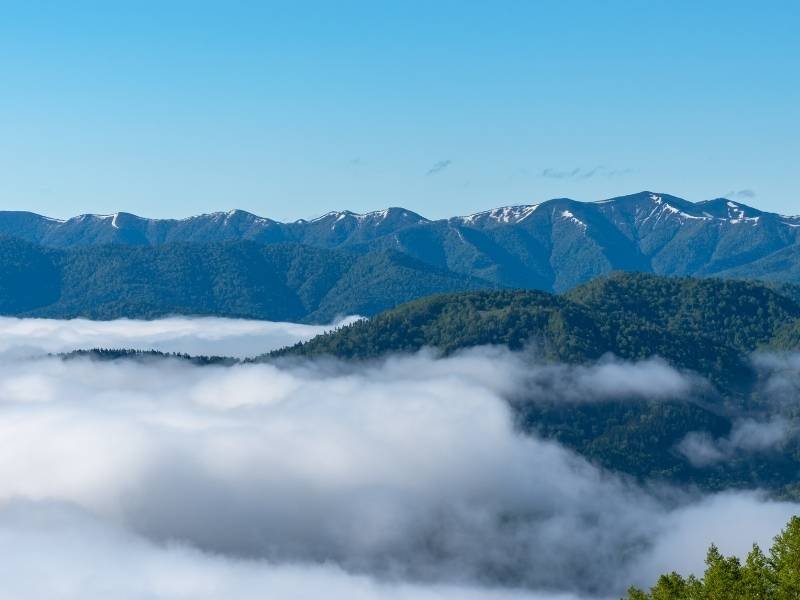
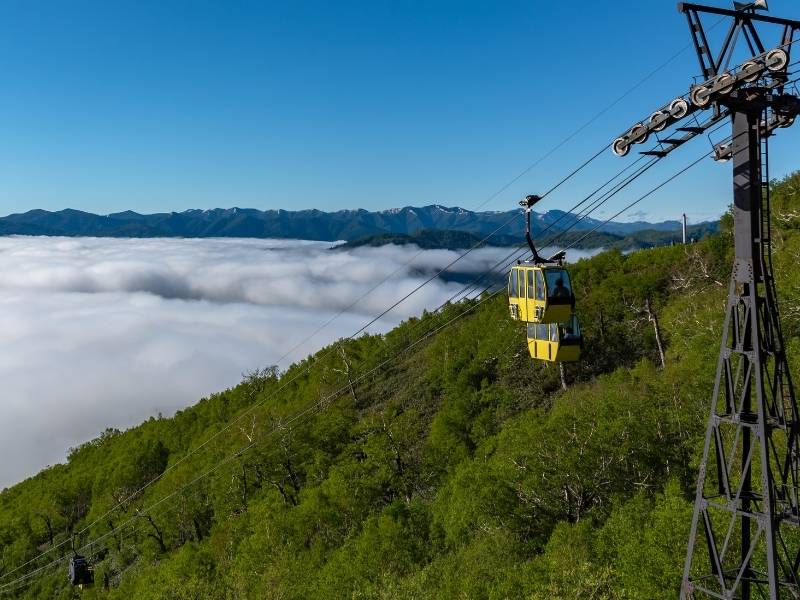
Location: Nakatomamu, Shimukappu, Yufutsu District, Hokkaido
Leaving the seas behind, we ascend to the sky above the clouds. Unkai Terrace in Hokkaido is the place to visit for an alpine observation deck with views of ice-capped mountains. Depending on the weather, a spectacular phenomenon known as a ‘sea of clouds’ may appear.
A ‘sea of clouds’ is an overcast layer of clouds that, when observed from higher ground, resembles a sea with the peaks of the mountains emerging like islands. If the weather allows, you can witness the clouds flowing against the mountains, demonstrating fluid-like properties.
Don’t forget to bring two cameras when you visit! One for capturing a timelapse and another for taking photos. The breathtaking scenery is something you won’t want to miss.
Jigokudani (Hell Valley)
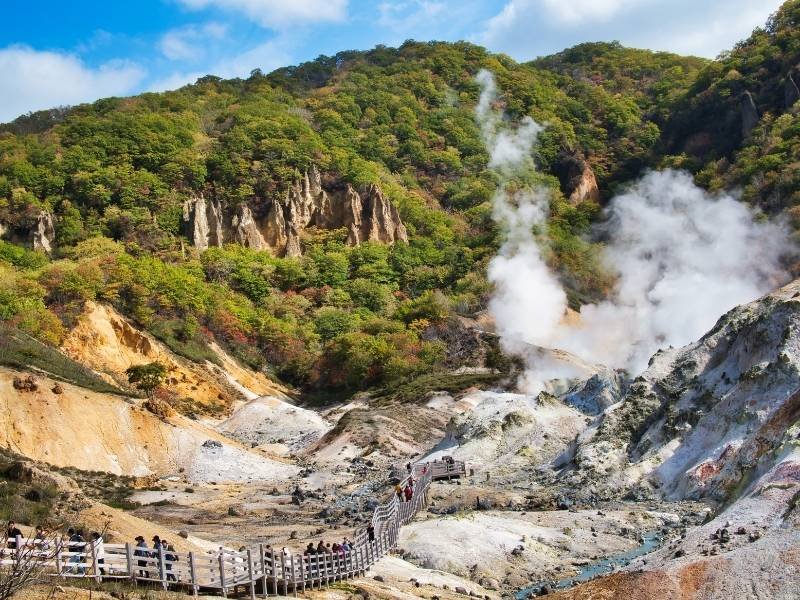
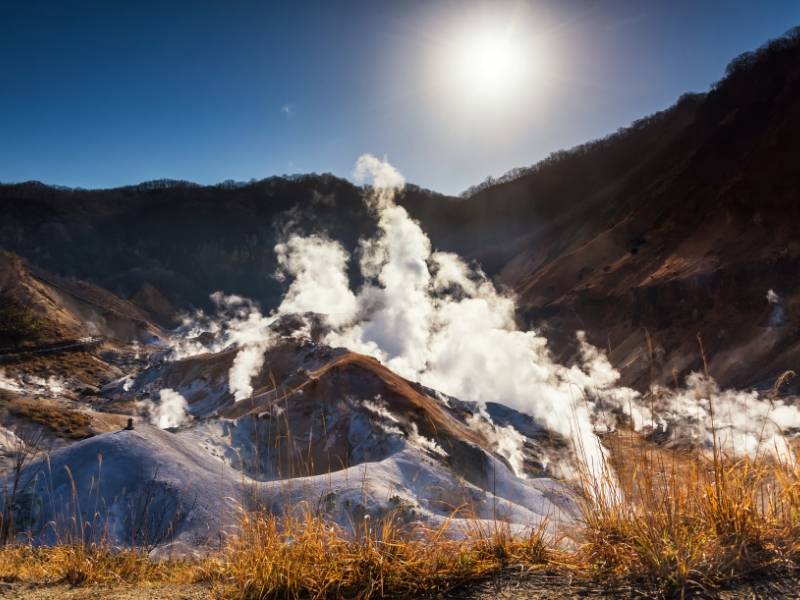
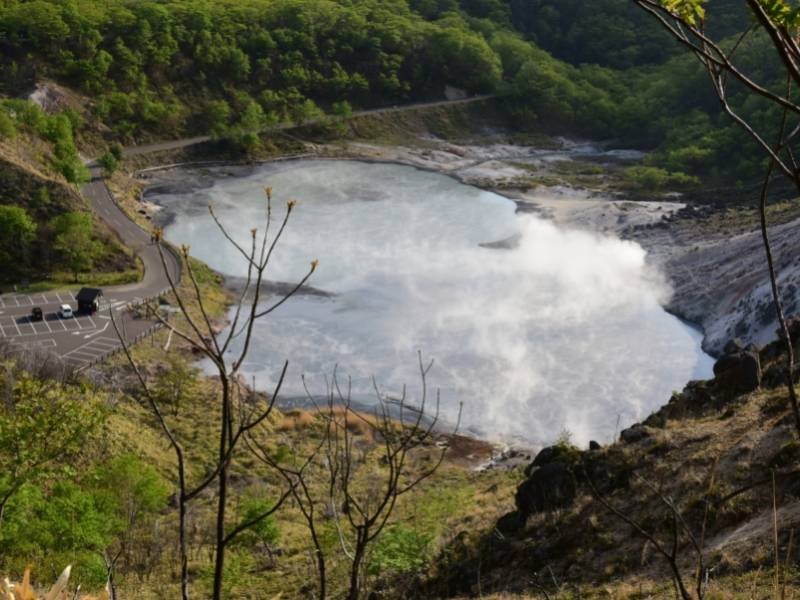
Location: Noboribetsuonsencho, Noboribetsu, Hokkaido
From the heavenly sight of the sea of clouds at Unkai, we now journey to a misty place known as Hell Valley.
Here, we can witness dramatic displays of sulfurous streams, hot steam vents, and other volcanic activity. Within the valley, you’ll observe discolored soil with a stream of turquoise water flowing through it. Steam rises from the ground, a spectacle that serves as a reminder of the earth’s vitality!
A 20-minute walk north of Jigokudani will lead you to Oyunuma Pond. This is a sulfur-rich pond with temperatures reaching up to 50 degrees Celsius. The pond’s milky blue color is a sight to behold, and you might find yourself wondering about the cause of this unique hue.
Coast of Shakotan Peninsula
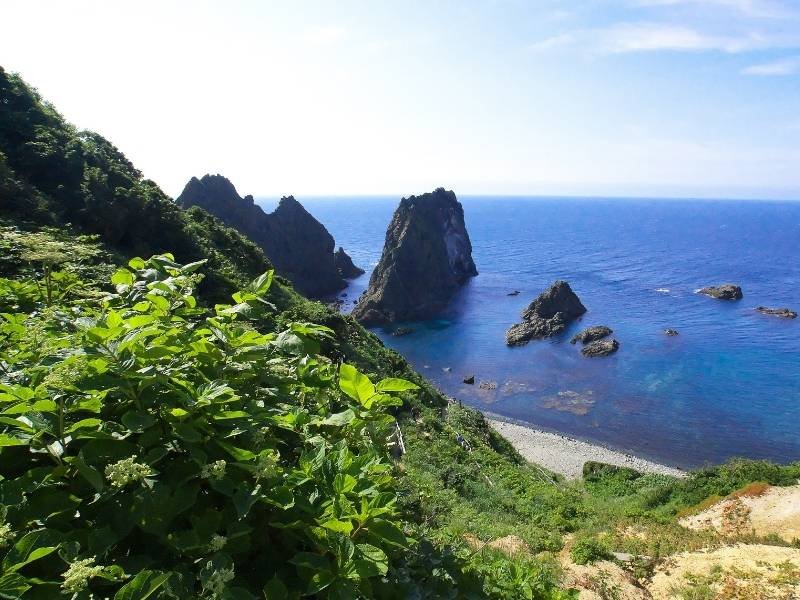
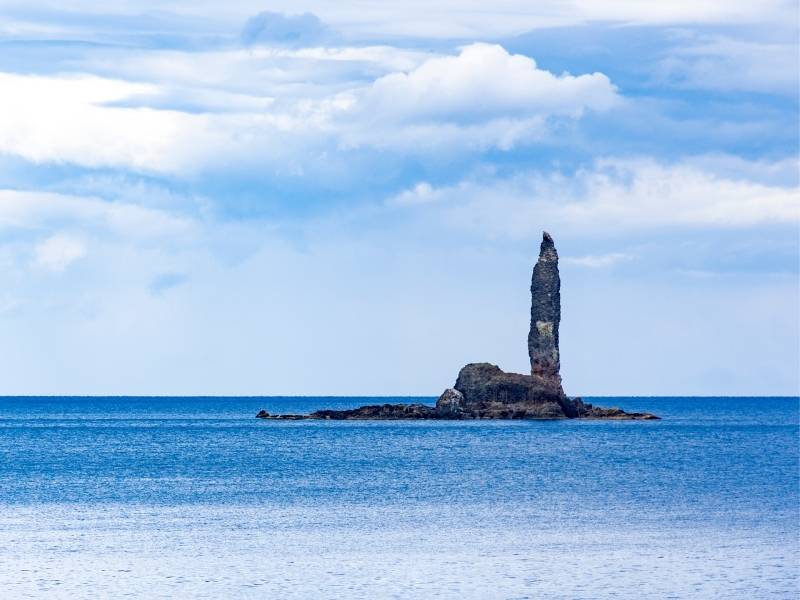
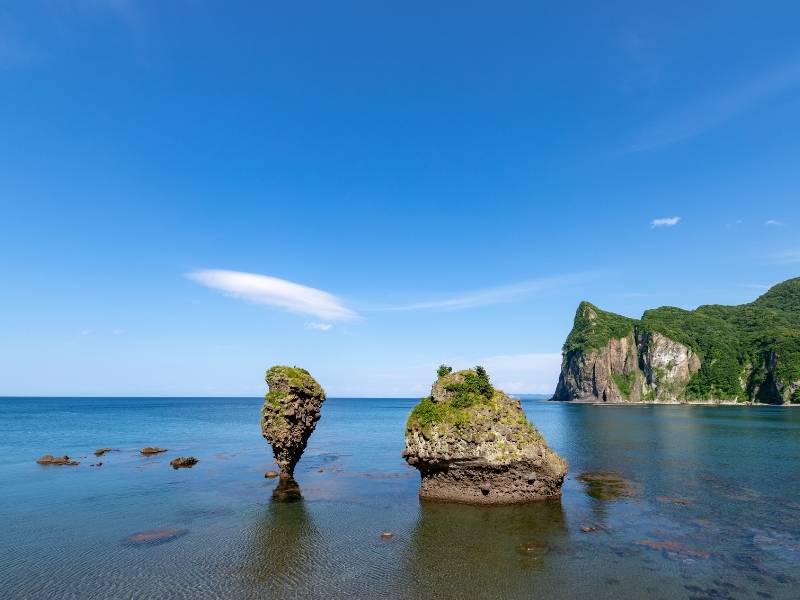
Location: Candle Rock / Ebisu Rock & Daikoku Rock / Kamui Rock / Jorokko Rock / Shimamui Coast, Shakotan Peninsula, Hokkaido
West of Sapporo, a scenic coast awaits, dotted with unusual rock formations. This area makes an excellent destination for a road trip around Hokkaido. The cliffs and the clear blue sea offer picturesque views, particularly at sunset.
During my exploration of the Shakotan Peninsula, I discovered five rock formations and one scenic point that are worth seeing:
- Candle Rock
- Ebisu Rock and Daikoku Rock
- Kamui Rock
- Jorokko Rock
- Shimamui Coast Viewing Deck
For those who appreciate the beauty of geological formations, these rocks are a must-see. If you’re among them, be sure to have your camera and zoom lens ready to capture these remarkable formations.
Hokkaido’s Shirogane Blue Pond
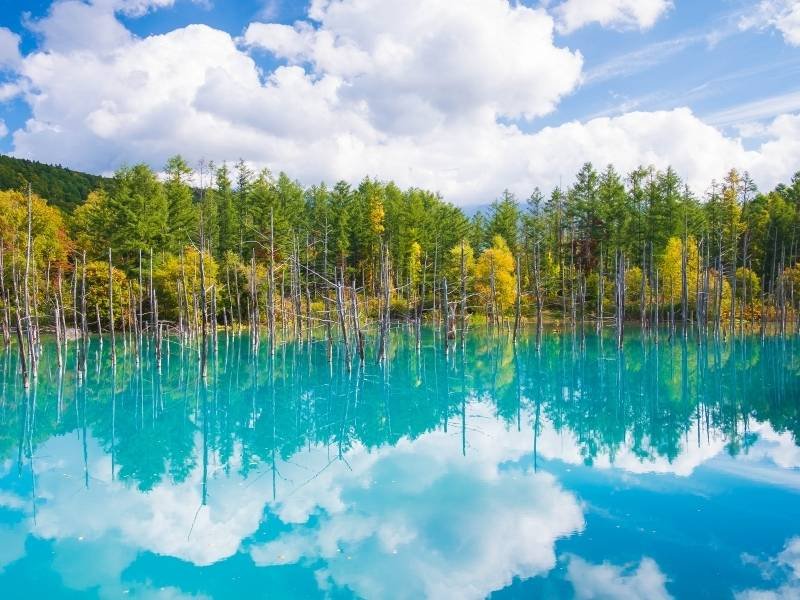
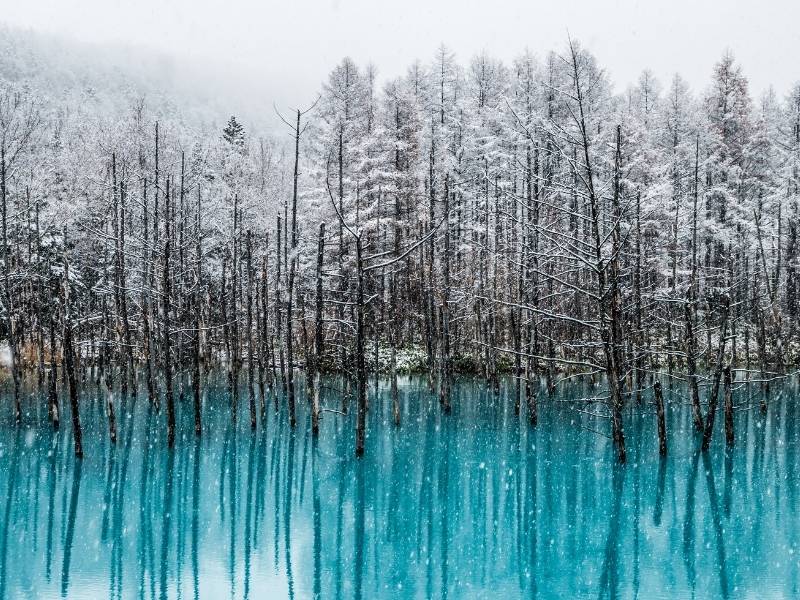
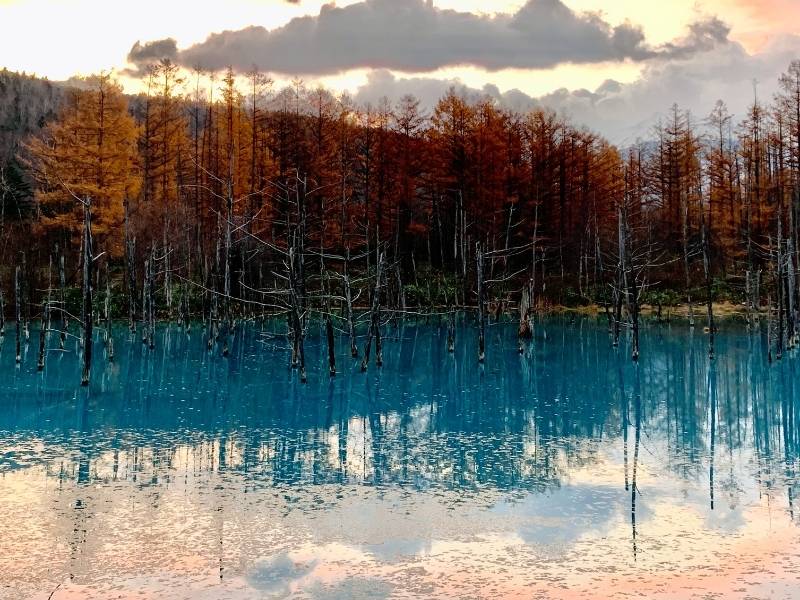
Location: Shirogane, Biei, Kamikawa District, Hokkaido
I was initially uncertain about including Shirogane Blue Pond in this list, given that it’s an artificially created pond. However, considering its natural beauty and wonder, I decided to include it. To the best of my knowledge, the creation of Shirogane Blue Pond was unintentional.
It resulted from a project involving the Biei River, designed to protect the town from the lava flow of Mount Tokachi during its eruption. Despite its origins, the pond offers a mystical view with its surreal, still blue waters reflecting the surrounding woods. It’s a beautiful sight to behold in any season of the year.
The Best Natural Wonders of Japan in the Tohoku Region
Leaving Hokkaido behind, we venture south to Tohoku.
This region, located at the northern tip of Honshu, the largest island in Japan, is home to a variety of natural wonders. First on the list is Zao Snow Monsters, a unique winter phenomenon that transforms the trees into eerie, snow-covered figures.
Next, we have the rock formations at Kitayamazaki. These natural sculptures, carved by the elements over centuries, are a testament to the power of nature. The third wonder is Geibikei Gorge, a serene river valley surrounded by towering cliffs. Finally, we have Mount Iwate, a majestic volcano that dominates the landscape.
More information about Tohoku
Tohoku, another region in Japan, is known for its remote beauty and somewhat harsh climate. This region, which makes up the northern part of Honshu, Japan’s largest island, is flanked by the Sea of Japan to the west and the Pacific Ocean to the east. It’s made up of six prefectures: Aomori, Akita, Iwate, Yamagata, Miyagi, and Fukushima.
In the 20th century, tourism became a major industry in Tohoku, with its breathtaking natural beauty drawing visitors from all corners of the globe. The region is also famous for its traditional crafts, including lacquerware, iron and copper utensils, toys, and textiles. The region’s main cities, Sendai and Aomori, offer a mix of city life and cultural heritage.
The mild summers in Tohoku provide a break from Japan’s humidity, making it a perfect place for hiking and exploring the numerous National Parks.
Tohoku is also known for its agriculture and is often called the rice granary of Japan. In addition to rice, fruit is grown in the region, and cattle are raised. The rich culture and traditions of the region can be experienced in both its cities and rural areas.
Zao Snow Monsters
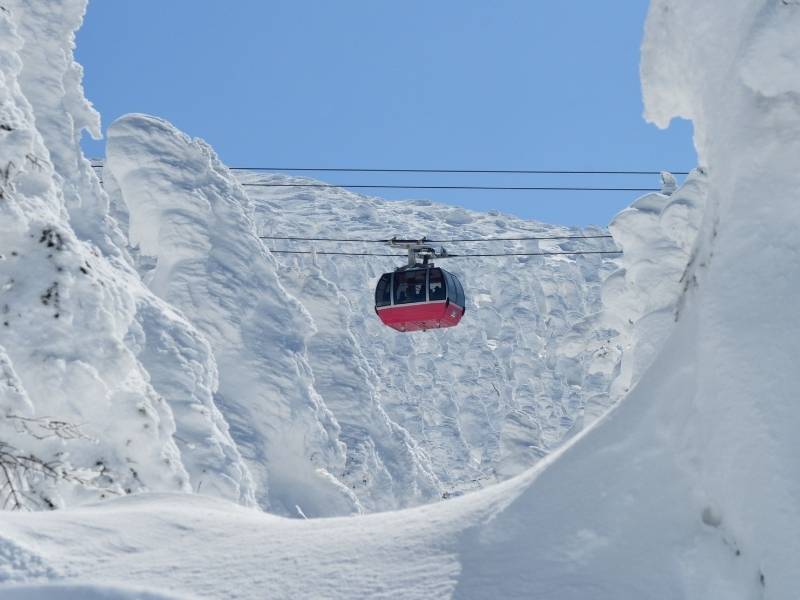
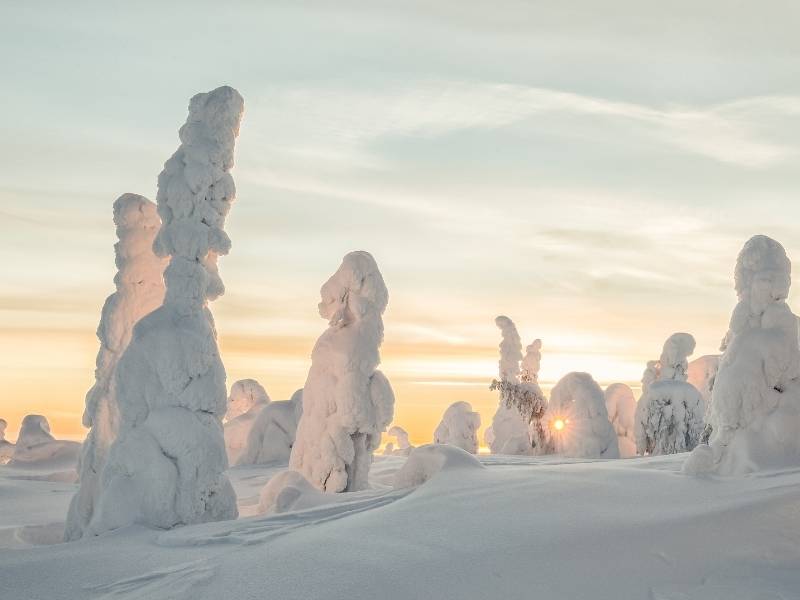
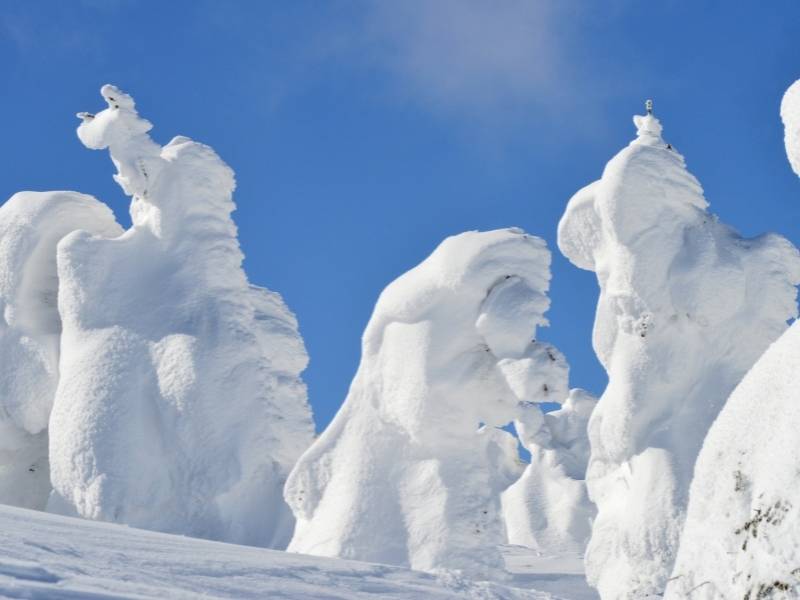
Location: Zaoonsen, Yamagata
These snow-covered trees, resembling human figures, will both creep you out and fascinate you! Either way, it’s a true winter wonderland that’s worth visiting whether you love skiing or sightseeing.
The experience is even more magical on a clear day with a beautiful sunset. The snow on the trees is painted with the golden hues of the setting sun, creating a picture-worthy view.
The area also offers skiing opportunities, with cable cars transporting visitors to higher locations to ski down the slope. From above, you get the chance to see an even more spectacular view of the ‘snow monsters’.
Rock formations at Kitayamazaki
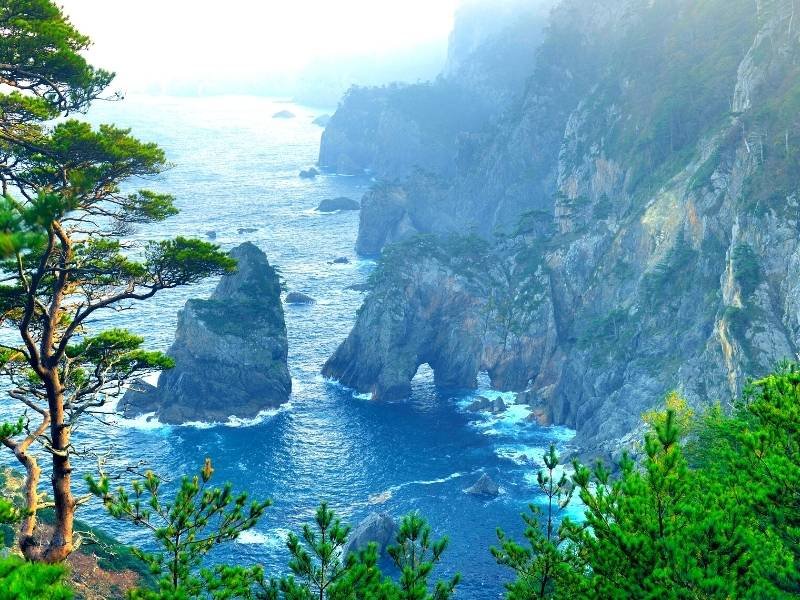
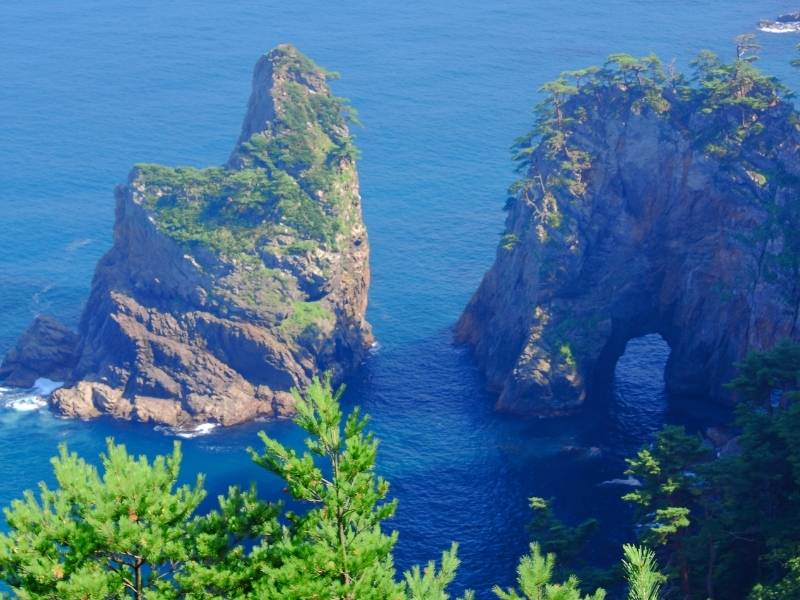
Location: Kumanohana Observatory / Kitayama Cape Observation Deck / 129-10 Kitayama, Tanohata, Shimohei District, Iwate
The cliffs of Kitayamazaki on the Rikuchu Coast present another breathtaking landscape in Japan that will captivate nature lovers and rock enthusiasts. The point where the sea meets the land on the Rikuchu Coast offers a scenic view that will leave you in awe.
Take a moment to observe the opening in the middle of the massive rock. Isn’t it spectacular? These magnificent cliffs stretch along an 8-kilometer coastline and reach heights of up to 200 meters. They have been awarded the highest rating in the “natural resource: coast” category by the Japan Travel Bureau Foundation’s National Tourist Resource Evaluation.
For a closer look, you can head to the 718-step esplanade observation deck and use the telescopes provided. With a bit of luck, you might even spot falcons and ospreys hunting prey along the shore.
Geibikei Gorge
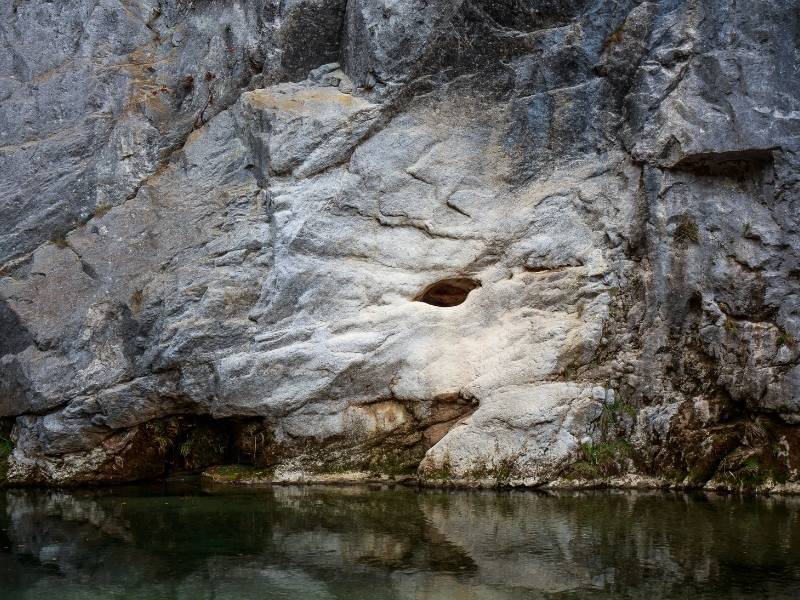

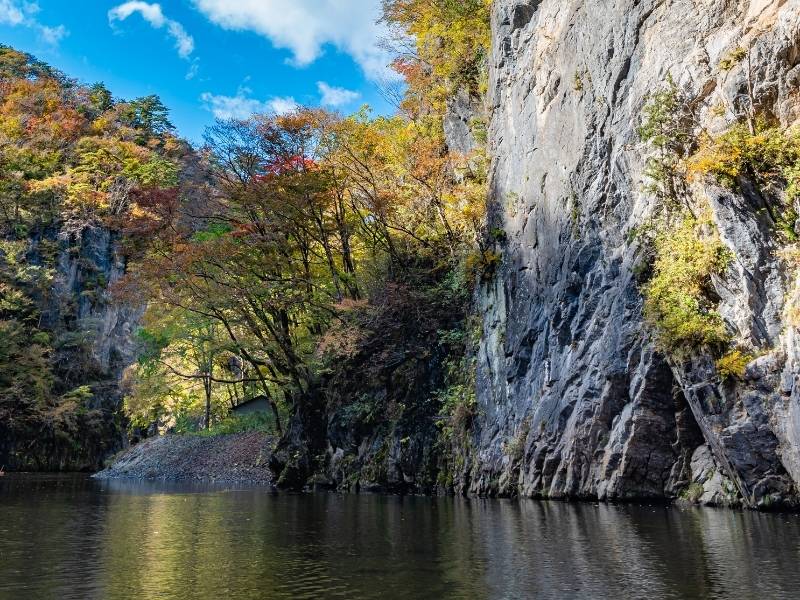
Location: Japan, 〒029-0302 Iwate, Ichinoseki, Higashiyamacho Nagasaka, 町 467番地
Prepare to crane your neck when you visit Geibikei Gorge. The towering cliffs and rock formations will draw your gaze upwards, while the fascinating rock formations along the river will captivate you as you cruise along. The boat trip along the river in Geibikei Gorge lasts for 90 minutes. This journey is a round trip on the river, guided by skilled boatmen.
This scenic ravine, with its 2-kilometer river and 50-meter cliffs, is designated as one of the National Places of Scenic Beauty and Natural Monuments. It’s also recognized as one of the 100 Landscapes of Japan.
You might think that the return leg could be boring because you’ve already seen everything in the gorge. But that’s not the case! The return trip to the dock is made even more enjoyable by the boatmen, who sing as they push the boat upstream using poles.
Mount Iwate
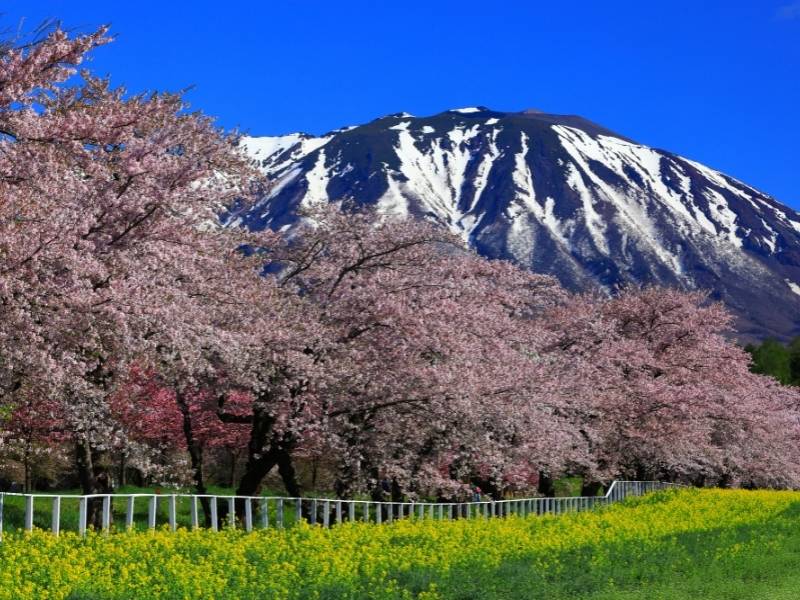
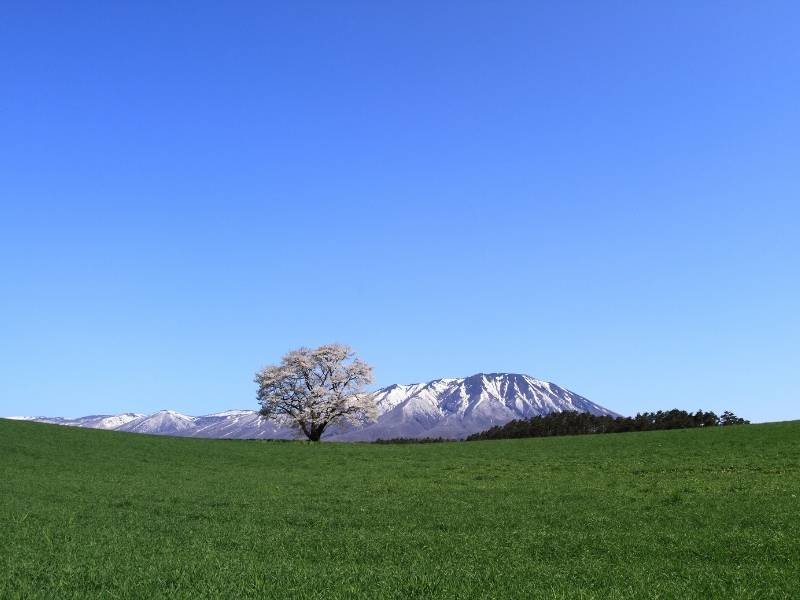
Location: Japan, 〒020-0507 Iwate, Shizukuishi, Maruyachi, 36−1 小岩井農場内
A trip to Iwate in Tohoku wouldn’t be complete without seeing Mount Iwate, a picturesque mountain reminiscent of Mount Fuji. There’s an interesting fact about Mount Iwate that I discussed in my post about the Most Beautiful Mountains in Japan.
For the best experience, visit the solitary cherry tree. This viewing spot is located in Koiwai Farm. Here, you can enjoy a beautifully minimal landscape with the mountain as the backdrop. It’s the perfect place to relax and appreciate the simplicity of life.
The ideal time to visit is on a clear spring day. You might also want to consider visiting during the afternoon’s golden hour. This way, you can witness the snow at the mountain’s summit change color from white to a stunning reddish-orange. It’s a sight you won’t want to miss.
Natural Wonders of Japan Awaiting us in Kanto Region
Kanto, the most populated and developed region in Japan, is not just a concrete jungle of buildings, houses, and temples. It also hosts a wealth of natural attractions. A glance at the map reveals that nearly half of Kanto is mountainous terrain, dotted with lakes.
This suggests that there’s an abundance of nature to explore in this region. Among the natural wonders that Kanto has to offer, Kegon Falls and Shosenkyo Gorge stand out as remarkable examples.
More information about Kanto
The Kanto Region, situated in the eastern part of Honshu, the main island of Japan, is recognized for its dynamic urban life and abundant cultural heritage. This region encompasses the Tokyo Metropolis and six prefectures: Ibaraki, Tochigi, Gunma, Saitama, Chiba, and Kanagawa. It is bordered by mountains to the north and west, and the Pacific Ocean to the east and south.
During the 20th century, Kanto emerged as a significant center for business and tourism. Its lively cities and historical landmarks draw visitors from across the globe. The region is distinguished for its cutting-edge technology and pioneering industries.
The principal cities of the region, Tokyo, Yokohama, Kawasaki, Saitama, and Chiba, provide a mix of contemporary lifestyle and traditional Japanese culture. The warm and humid summers in Kanto make it an ideal location for urban exploration and the enjoyment of the numerous city parks.
Kegon Falls
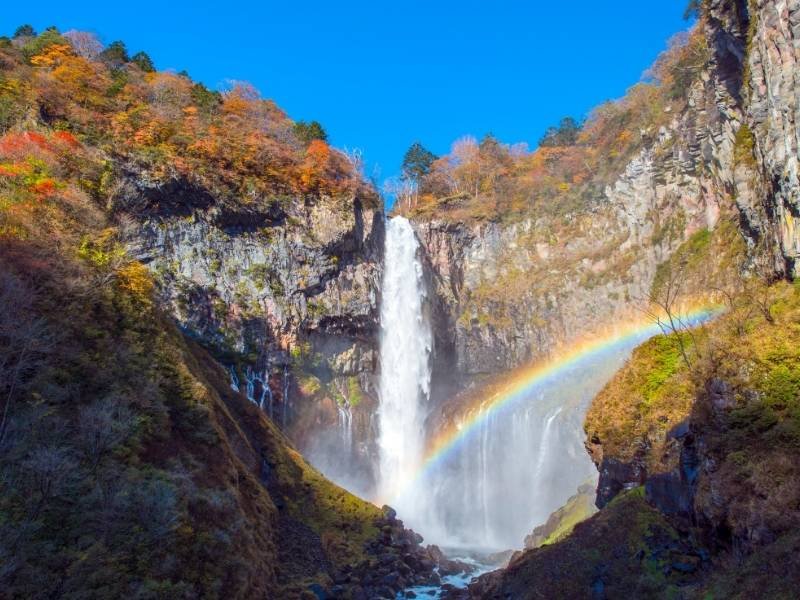
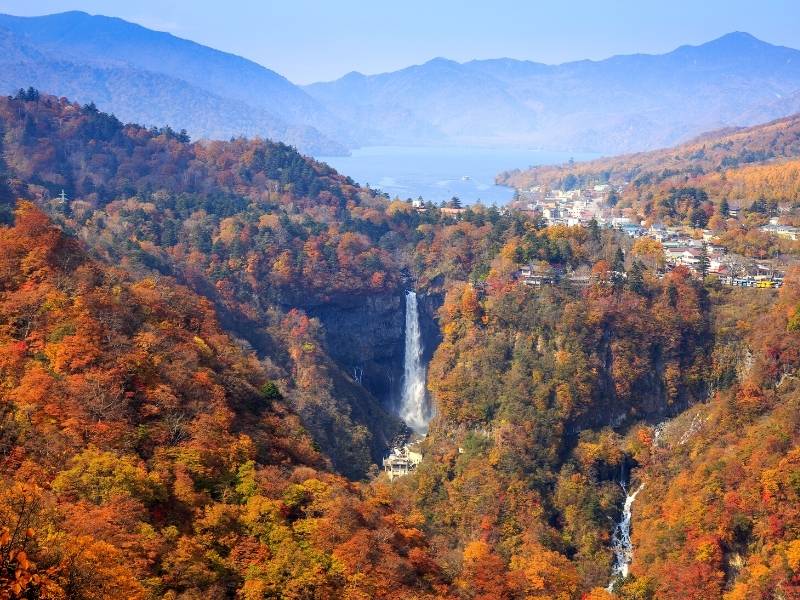
Location: Chugushi, Nikko, Tochigi
What a glorious sight Kegon Falls is, standing as one of Japan’s finest waterfalls. Upon closer inspection, you’ll notice that it’s not just a single waterfall, but many. The scene is reminiscent of an avatar, making it irresistible to visit.
Kegon Falls stands approximately 97 meters or 318 feet tall. The main waterfall is accompanied by 12 smaller ones that seep from the center of the rocky wall. This place is worth a visit, as it’s recognized as one of Japan’s Top 100 Waterfalls.
Moreover, Kegon Falls is also one of the “Eight Views” of Japan. This list showcases the best of Japan and its culture, and even a glimpse of it is definitely worth it!
Shosenkyo Gorge

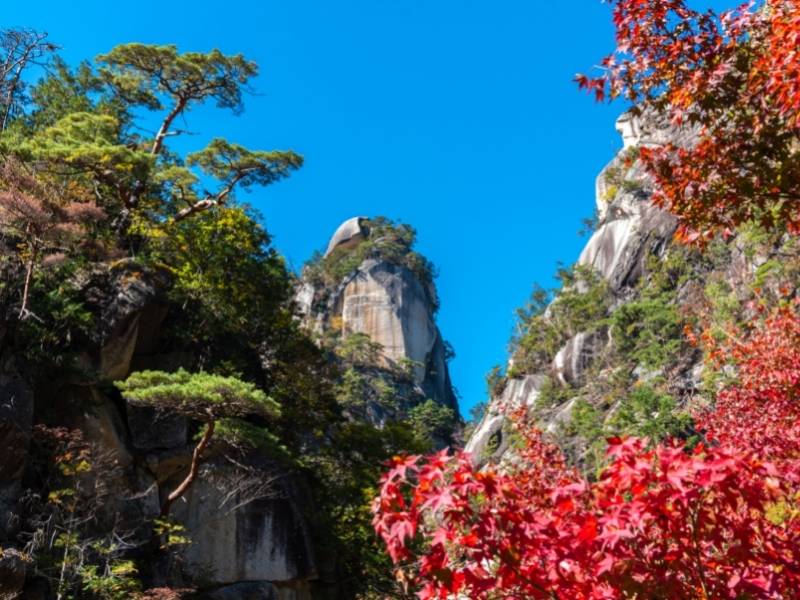
Location: Takanaricho, Kofu, Yamanashi
Shosenkyo Gorge is another amazing location in Kanto, perfect for a nature walk with views of various rock formations. The gorge features riverside walking trails nestled between cliffs, punctuated by a few waterfalls and fantastic fall foliage.
The most famous rock in Shosenkyo Gorge is known as Kakuenbo. Many people liken this protruding rock to China’s Mount Taishan. When you visit, remember to look up so you don’t miss it, but always be mindful of your steps!
Within the gorge, you’ll find a 30-meter-tall waterfall named Senga Waterfall. Its roar can be heard even from a distance! Notably, it’s also one of Japan’s 100 best waterfalls, making it a must-see during your visit.
Spectacular Natural Wonders of Japan in the Chubu Region
Venturing south or west from the Kanto region, we find ourselves in a part of Japan that, in my view, is particularly rich in natural beauty. The landscape here is dotted with must-see wonders that never fail to impress.
The Kiyotsu Gorge is one such marvel, its grandeur leaving an indelible mark on all who visit. Equally impressive is Tojinbo, with its rugged cliffs and the relentless waves that crash against them.
Then there’s the serene beauty of the Shiraito Falls, a cascade of water that seems to flow straight out of a dream. The Japanese Alps, too, are a marvel of nature, their towering peaks a testament to the raw power of the natural world.
And last but certainly not least, there’s Mount Fuji. This iconic peak needs no introduction, its snow-capped summit a symbol of Japan known the world over.
More information about Chubu Region
Chubu, another region in Japan, is known for its varied landscapes, majestic mountains, and thriving manufacturing industries. This region is a popular choice for outdoor enthusiasts, offering activities like hiking and mountaineering. It’s home to renowned landmarks such as Mount Fuji and the Japan Alps.
Nagoya, the main city of Chubu, is well-known for its automobile and aircraft industries. The climate in Chubu strikes a balance between Japan’s humid summers and snowy winters, making it a perfect spot for exploring the numerous mountainous terrains.
Moreover, Chubu is steeped in rich cultural heritage. The local traditions and customs come alive in the historic towns nestled in the Kiso Valley.
Kiyotsu Gorge
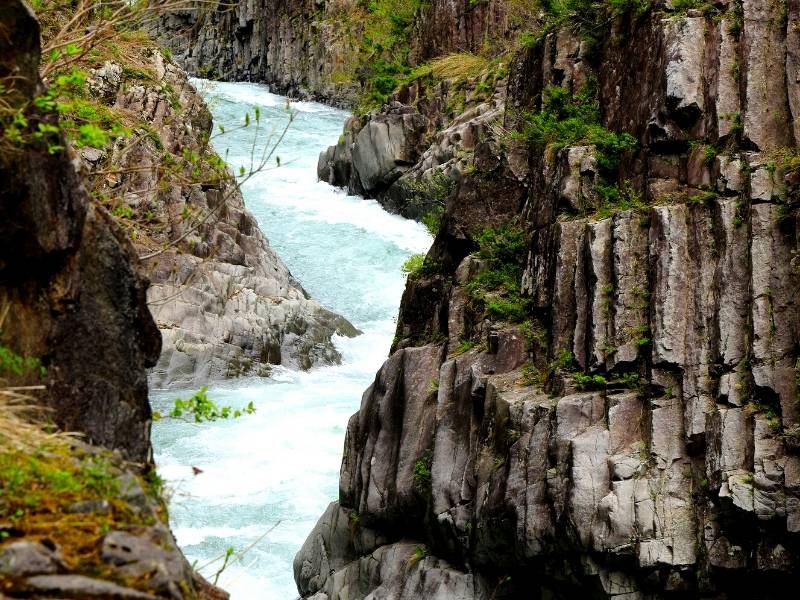
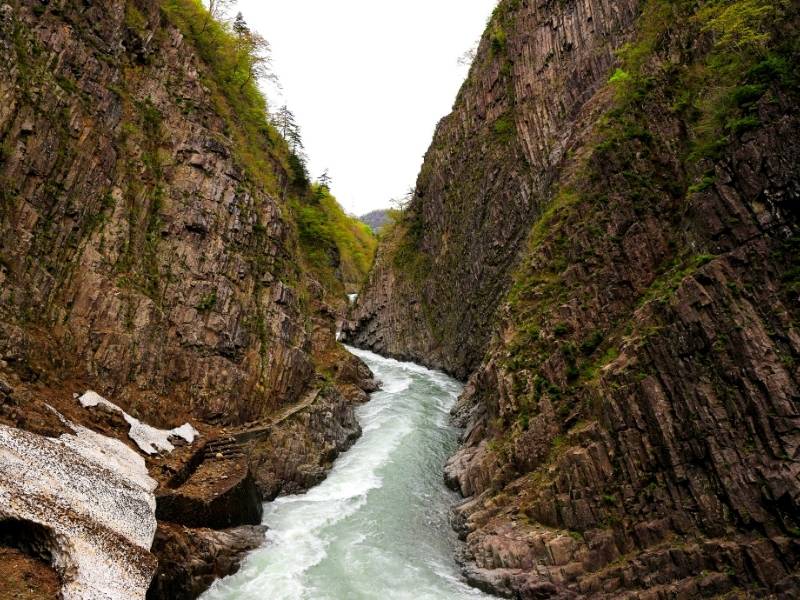
Location: Koide, Tokamachi, Niigata
Experience the undeniable power of nature as you take in the panoramic view of the massive lava rock formations in Kiyotsu Gorge. This will be a magical experience, especially for geologists and rock enthusiasts.
The rock formation visible on the walls and slopes of the mountains in Kiyotsu Gorge is known as “columnar jointing.” These may be just rocks, but don’t they showcase nature’s creativity?
You need not worry about falling rocks if you wish to see the gorge. You won’t be hiking in it. Instead, you will traverse a 750-meter tunnel. This tunnel features four viewpoints, each offering Instagram-worthy scenes of the most picturesque parts of the gorge.
Tojinbo

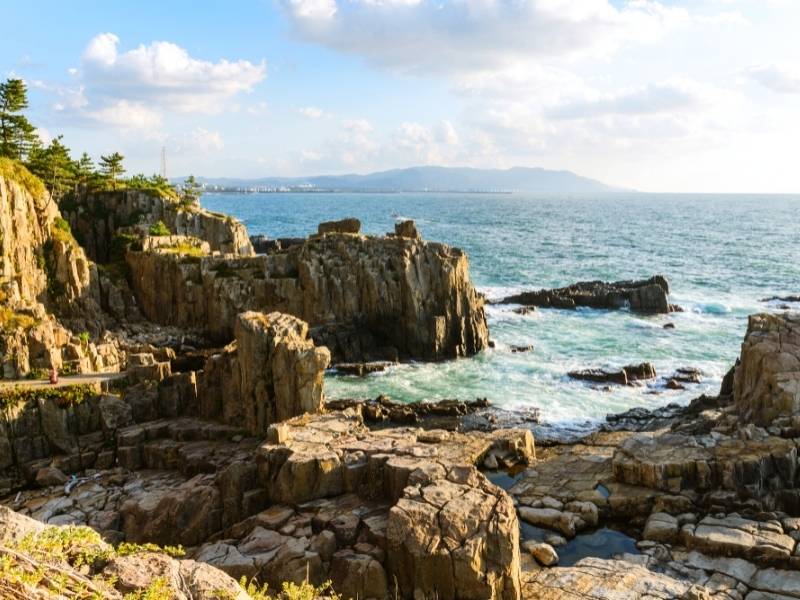
Location: Mikunicho Anto, Sakai, Fukui
Tojinbo is perhaps one of the most puzzling yet scenic landscapes in Japan. It bears a striking resemblance to Iceland. The pillar-shaped rocks give the impression that they were man-made, but they are entirely natural!
In some photos, these rocks appear small, as if they were only a meter tall or less. That’s why I included a picture of tourists wandering at the cliff. As you can see, they are gigantic! These cliffs are said to tower up to 30 meters.
Even if you are not particularly fond of rocks, this place is a must-visit. After all, there are only three places in the world where you can find these rocks! Moreover, the entire area is picturesque.
Located on the west coast of Japan, Tojinbo is best visited in the afternoon, just before sunset. It’s during this time that the rocks’ crispest details emerge, highlighted by the sun’s thinning angle with the horizon.
Shiraito Falls
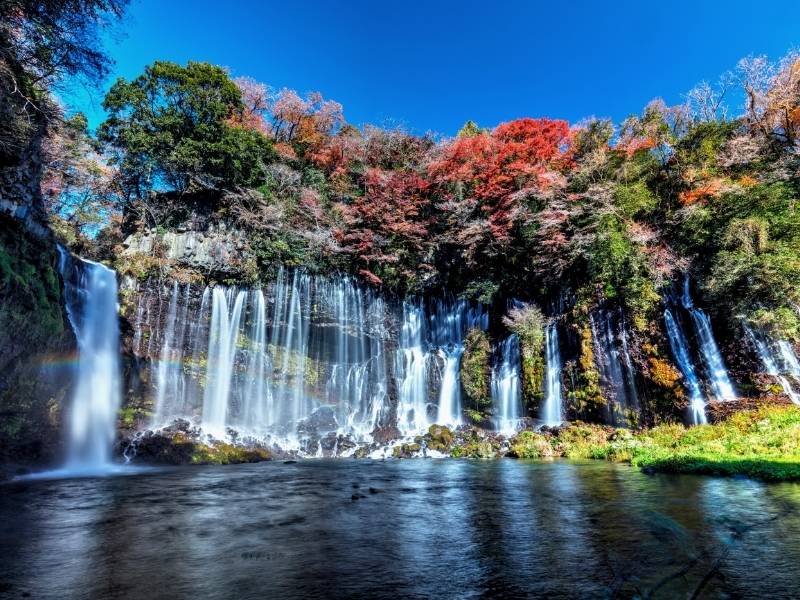
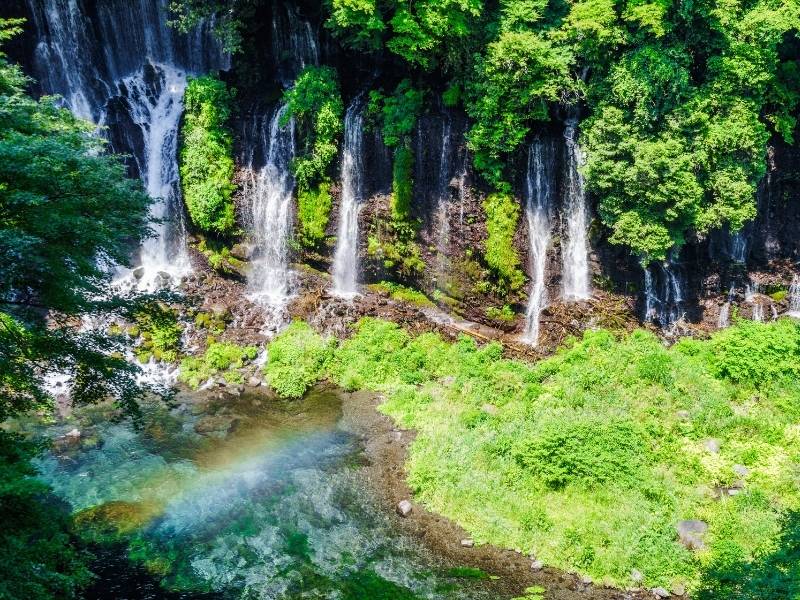
Location: Kamiide, Fujinomiya, Shizuoka
If you’ve never seen a waterfall curtain before, Shiraito Falls is an excellent choice for your first experience. This waterfall, which is 150 meters (492 ft) wide and 20 meters (65.62 ft) tall, is included in Japan’s list of best waterfalls.
Seeing it will not disappoint you, especially if the weather is favorable. The waters of Shiraito Falls originate from Mount Fuji. This is why the water cascading from the falls into the plunge pool is so clean and has a blue hue.
The waterfall’s name is derived from its appearance, which resembles silk threads hanging from trees.
Japanese Alps
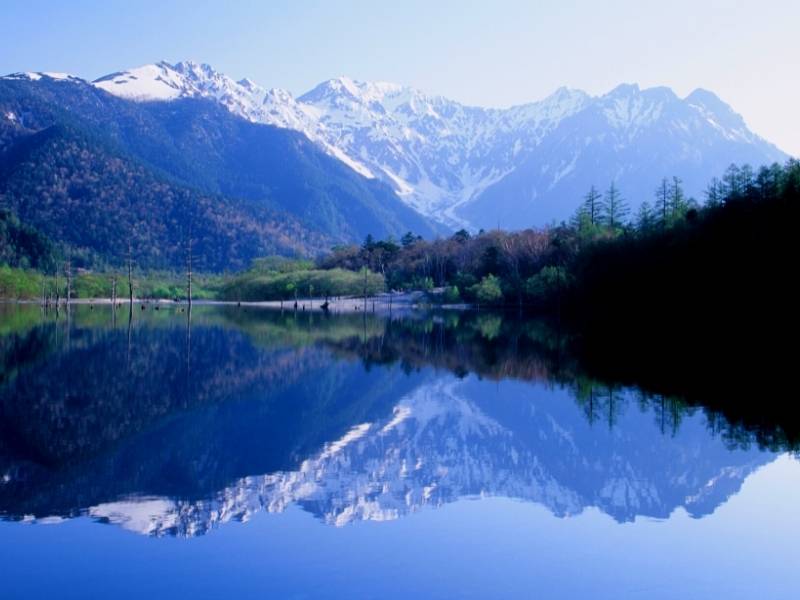
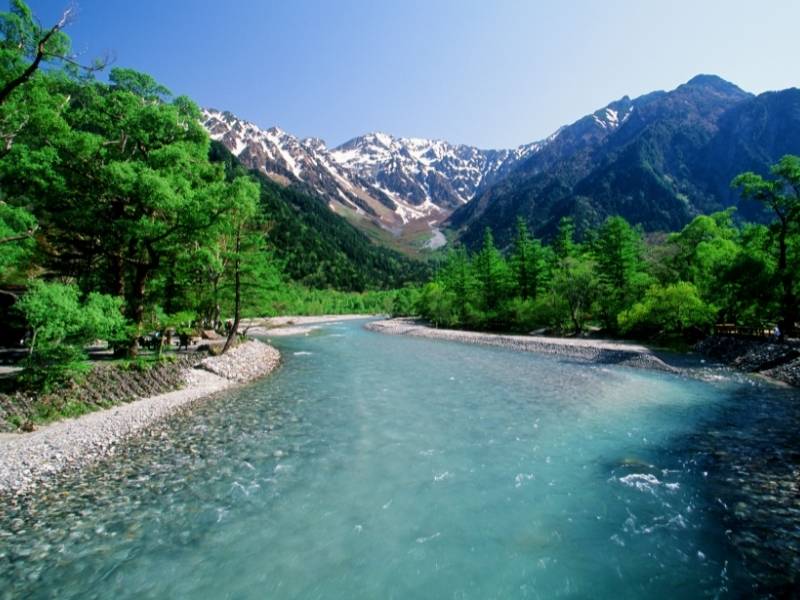
Who would have thought that you could find landscapes reminiscent of the Himalayas, the European Alps, or the Canadian Rockies in Japan? I was unaware that Japan boasted alpine mountains until I discovered it, and the revelation was mind-blowing!
If you desire a similar view in Japan, your destinations should be Kamikochi or Hakuba. These two locations serve as the starting points for hiking the Japanese Alps, specifically the Hida Mountains.
The Hida Mountains, also known as the Northern Japanese Alps, are home to Mount Kita, the second tallest mountain in Japan. Climbing this mountain offers a unique opportunity to see Mount Fuji, Japan’s tallest peak, rising majestically above the clouds.
Mount Fuji
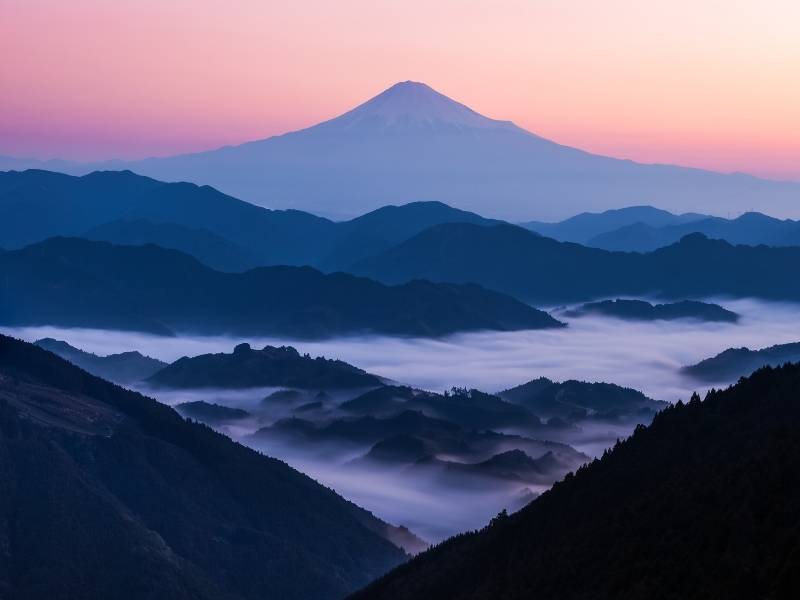
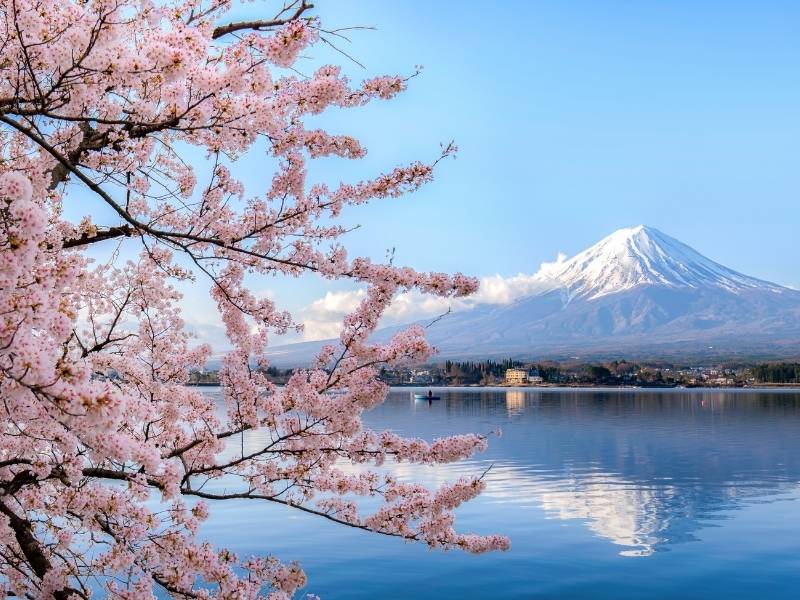
Location: Kitayama, Fujinomiya, Shizuoka
It’s no surprise that Mount Fuji has earned a spot on this list. As the ultimate marvel of Japan, it stands unrivaled! You have the option to hike up Mount Fuji or simply admire it from the neighboring towns.
However, if you’re looking for an exceptional location to view Mount Fuji, the Five Lakes of Fuji would be your best bet.
Natural attractions in Japan located in Kansai Region
If you travel further south from Chubu, you’ll reach Kansai. This region is the cultural hub and historical heart of Japan. However, that’s not the only story Kansai has to tell.
Kansai is also home to a plethora of natural wonders. Whether it’s inland, at sea, or water cascading down a cliff, Kansai has it all.
Among the must-see natural attractions here are Nachi Falls, Mount Yoshino, the Arashimaya Bamboo Grove, and Engetsu Island. These are the highlights that make Kansai a destination worth exploring.
More information about Kansai Region
Kansai, a region in Japan, is recognized for its deep cultural heritage and historical importance. History enthusiasts often choose this region for its preserved historical buildings and landscapes, offering a window into Japan’s past.
The main cities of Kansai, Osaka, Kyoto, and Kobe, are celebrated for their distinctive mix of modern and traditional Japanese culture. Kansai’s climate, with its humid summers and snowy winters, provides an ideal setting for exploring the region’s many cultural landmarks.
Kansai’s cultural heritage is profound. In the historic cities of Kyoto and Nara, local traditions and customs are vibrant and alive. The Kinki District, which translates to “near the capital”, is part of this region. It includes the three major cities of Osaka, Kyoto, and Kobe, collectively known as Keihanshin.
Nachi Falls
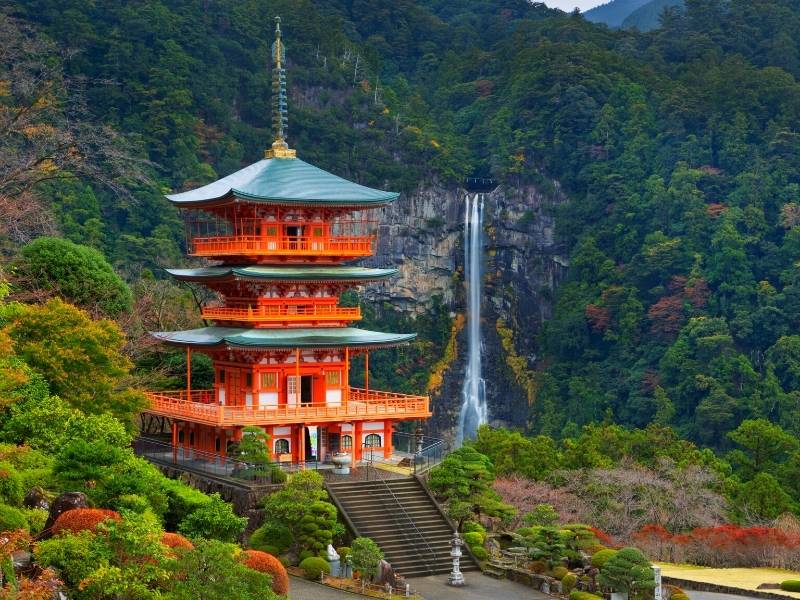
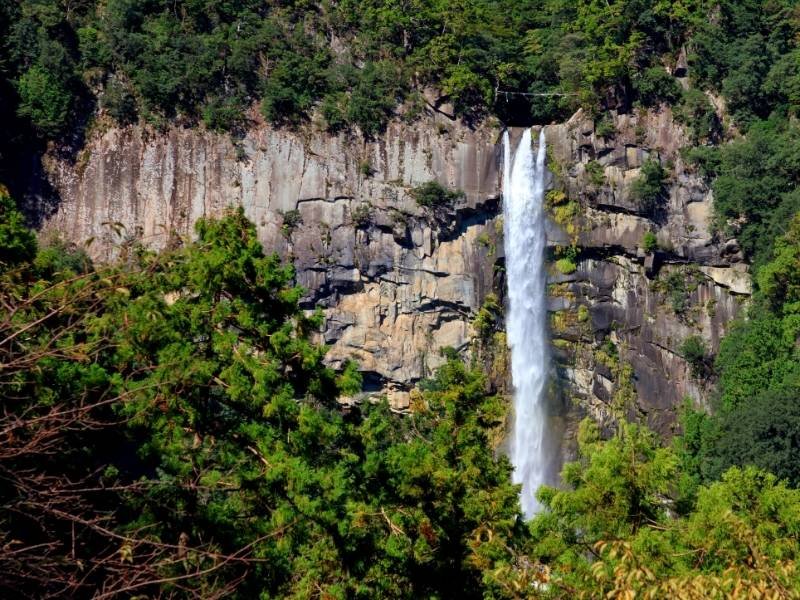
Location: Nachisan, Nachikatsuura, Higashimuro District, Wakayama
Nachi Falls, the tallest and most famous waterfall in Japan, boasts a single, uninterrupted drop. This graceful cascade of water rushing down to the earth is a sight that never fails to captivate.
I’m not certain if I had the chance to witness this spectacle in person back in 2008. However, I do have a memory of visiting a stunning waterfall at some point.
Regardless, Nachi Falls has been one of my biggest travel inspirations for Japan. This fascination began years ago when I stumbled upon a promotional video from Japan (see below). Standing at 133 meters (436 ft) tall and 13 meters (43 ft) wide, this waterfall in Japan continues to fuel my desire to return to the country time and again.
Mount Yoshino
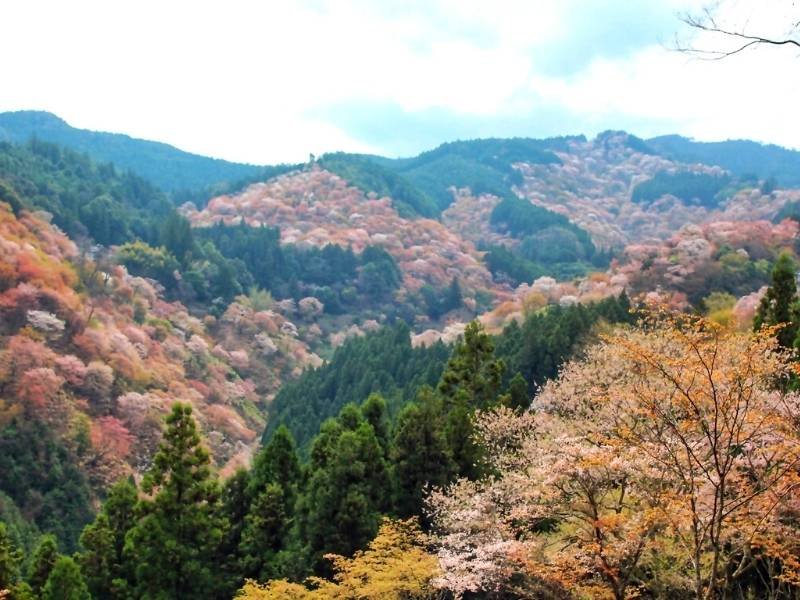
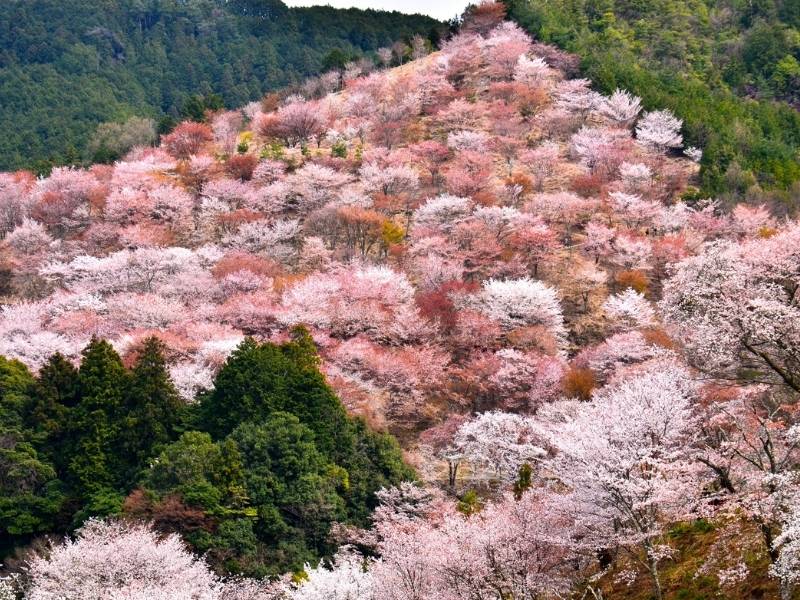
Location: Yoshinoyama, Yoshino, Yoshino District, Nara
If you’re planning a trip to Japan during the spring season, Mount Yoshino is a destination you won’t want to miss! It’s home to a veritable forest of cherry trees, creating a spectacle that’s truly breathtaking.
Just as Hokkaido and the Tohoku Region are known for their winter wonderlands, Mount Yoshino could be considered a spring wonderland. A few years ago, the count of cherry trees here was around 3000. I wouldn’t be surprised if that number has grown since then!
Before you start your ascent of Mount Yoshino, make sure to visit Yoshino Town. I’ve included it in my list of beautiful countryside towns in Japan. I’ve also detailed some activities you can enjoy while visiting Mount Yoshino in that list. So, don’t forget to check it out!
Bamboo Groove
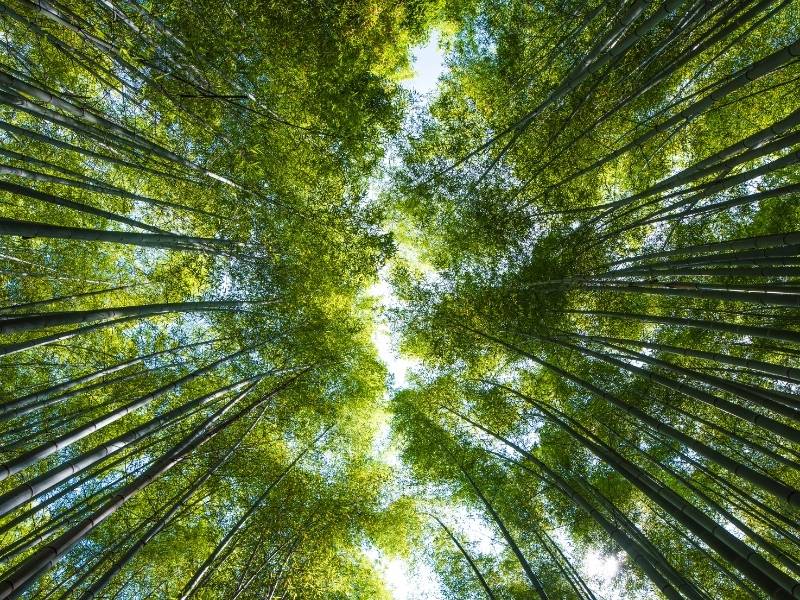
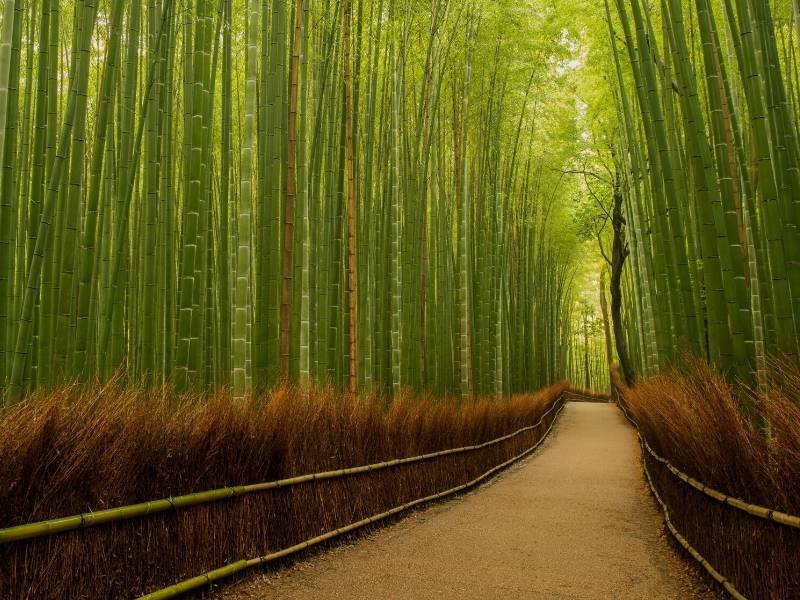
Location: Ukyo Ward, Kyoto
The Bamboo Forest, also known as the Bamboo Grove, is perhaps one of the most renowned locations in Japan. It’s included in the “100 Soundscapes of Japan,” a list curated by the Japanese Ministry of Environment. This list features places where people can escape the city’s noise pollution.
Many recommend visiting the Bamboo Grove either early in the morning or late in the afternoon. This is when you can truly experience the tranquility of the forest.
One of the great things about the Bamboo Forest is that it’s open 24 hours a day. So, feel free to visit at a time that suits you best. Enjoy the serene atmosphere whenever you wish!
Engetsu Island
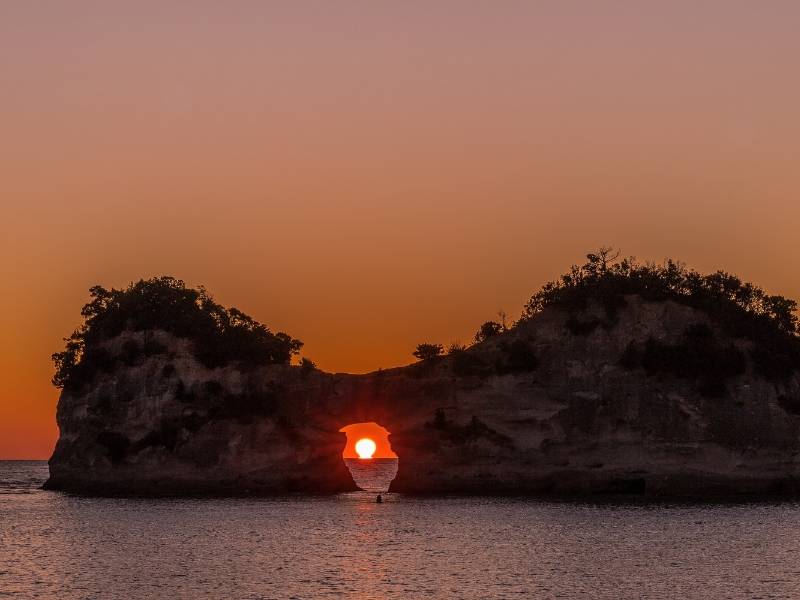

Location: Wakayama
Engetsu Island is a small islet visible from the Shirahama coast. It’s notable for its full moon-shaped hole in the center, a result of thousands of years of erosion by ocean waves.
While the island may appear small and ordinary, it’s not to be underestimated. The spectacle it offers is truly remarkable, especially during sunset. At this time, it provides unparalleled views of the sea, sky, and sun.
For those interested in capturing the sun in the hole of Engetsu Island, the best time to visit the Shirahama coast is in the afternoon. Aim for around 6:30 pm in the summer and 4:30 pm in the winter. This timing will offer the most stunning photographic opportunities.
Japan’s Natural Attractions in Chugoku Region
After Kanto, if we move further south, we’ll arrive at Chugoku. This is the southernmost and westernmost part of Honshu. When we view Chugoku from Google Earth, we can see that a large portion of its area, especially in the middle, is filled with mountains running from east to west. This divides the region into two.
Figuratively speaking, mountains often hide “gems” that are wondrous when discovered. These are commonly waterfalls, gorges, or jutting limestones. In Chugoku, we can visit a spectacular limestone cave.
What surprised me about Chugoku is that its natural wonders lie outside the mountainous areas. In fact, they are located in the coastal portion of the region. Believe me, they are unique and among the most unusual of all! Specifically, these wonders include the Akiyoshi Limestone Cave, Tottori Sand Dunes, Oki Islands, and Susa Hornfels.
More information about Chugoku Region
Chugoku, a region in Japan, is known for its stunning natural beauty and geographical diversity. Nature lovers often gravitate towards this region for its unique landscapes and natural wonders, offering a glimpse into Japan’s rich biodiversity.
The main areas of Chugoku, Hiroshima, Okayama, and Tottori, are renowned for their harmonious blend of rural charm and traditional Japanese culture. Chugoku’s climate, with its hot summers and mild winters, provides an ideal setting for exploring the region’s many natural attractions.
Chugoku’s natural heritage is remarkable. In the mountainous areas and coastal regions, local flora and fauna are abundant and thriving. The San’in District, which translates to “shadow of the mountain”, is part of this region. It includes the three major areas of Hiroshima, Okayama, and Tottori, collectively known as Sanyo.
Akiyoshi Limestone Cave
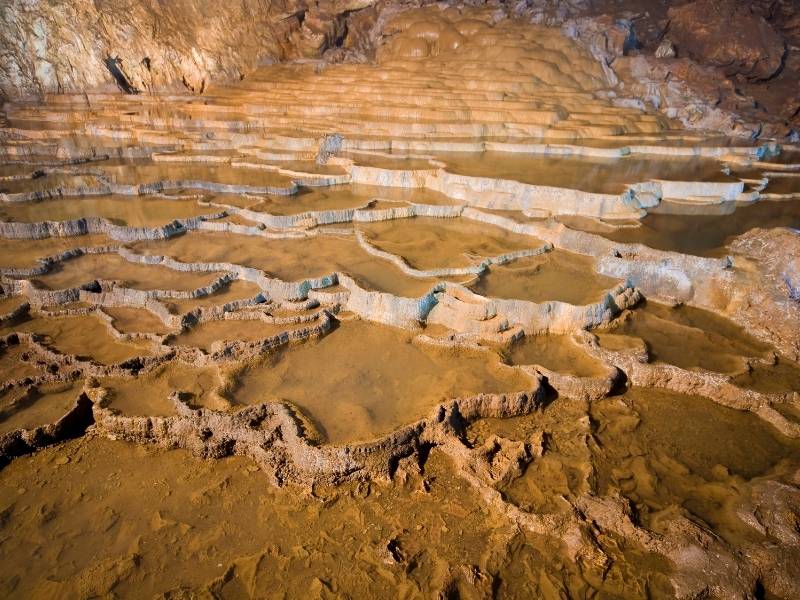
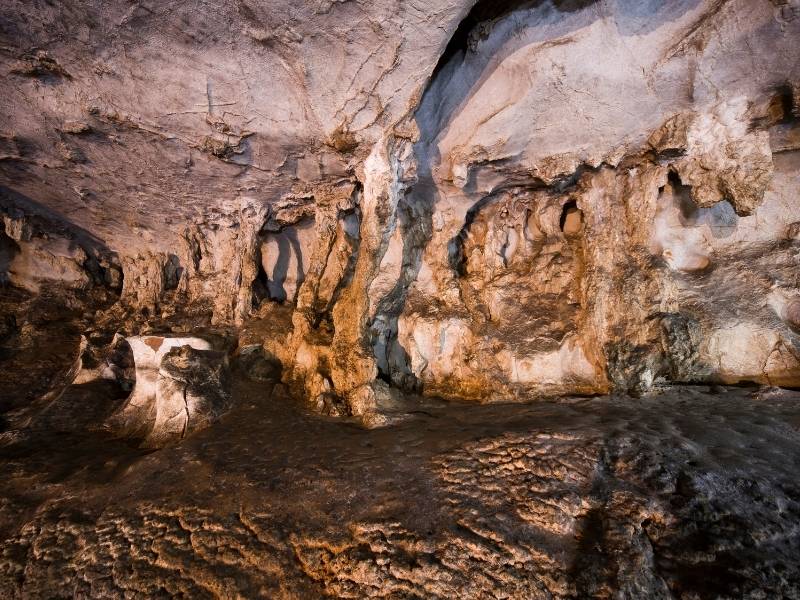
Location: Shuhocho Akiyoshi, Mine, Yamaguchi
We often forget that natural wonders are found in every corner of the earth, including what’s beneath us… The caves! In the westernmost portion of Chugoku Island, we can discover the Akiyoshi Limestone Cave.
This place will leave you in awe, even though you’re already underground. That’s because the Akiyoshi Limestone caves are filled with extraordinary rock formations that will make you wonder, “who created this?” Yet, it was not crafted by anyone – it’s purely nature’s work.
The Akiyoshi Limestone Cave is part of the Akiyoshidai Plateau Quasi-National Park, located on a karst plateau that is representative of Japan. The cave stretches for 10 kilometers and is filled with limestones that are already 300 million years old.
If you are tall, there’s no need to worry about whether you can stand straight inside the cave. The ceilings of the cave reach up to 80m in height.
Tottori Sand dunes
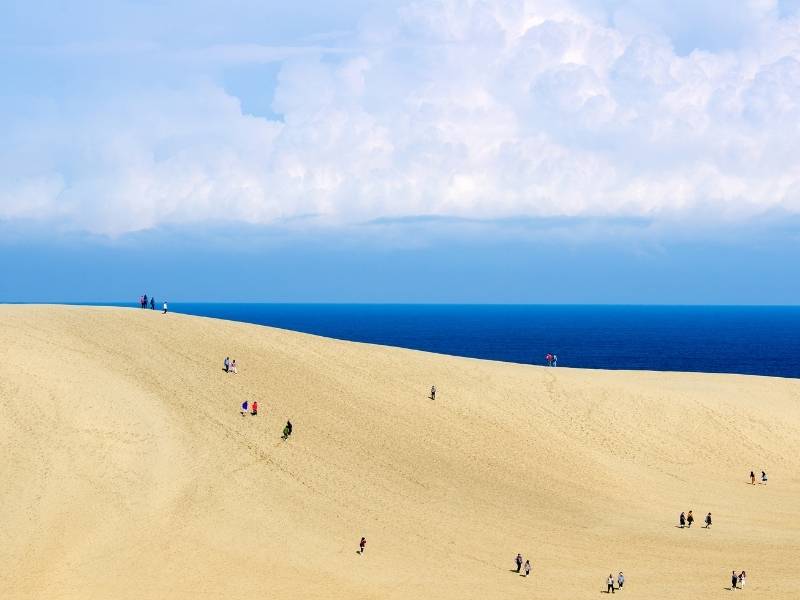
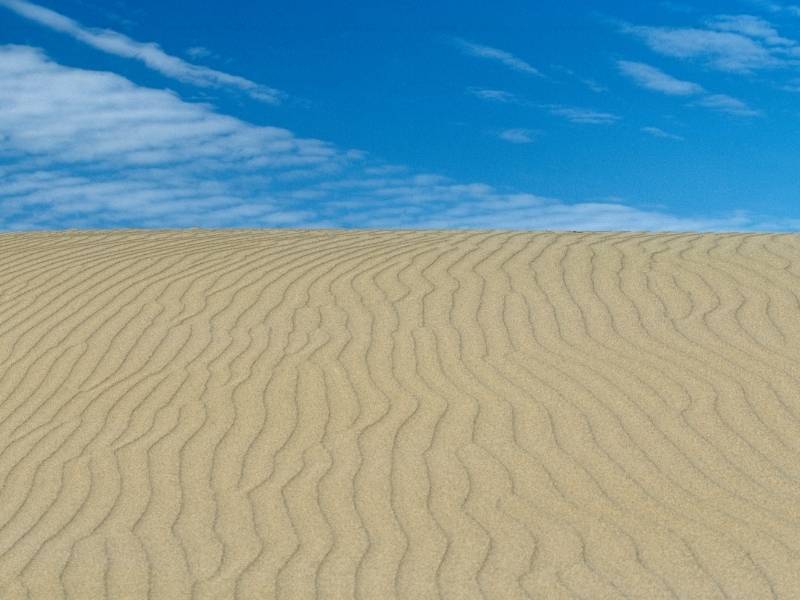
Location: Fukubecho Yuyama, Tottori
When we examine the map, it seems unlikely to find a desert-like place in Japan. Given its surrounding ocean and wet, temperate climate, it seems almost impossible, right? However, such a place does exist, and it’s called the Tottori Sand Dunes, located here in Chugoku.
This is the only sand dune system in Japan, spanning over 30 square kilometers. Scientists believe that these dunes have existed for more than 100 thousand years. The sand originated from the Chugoku mountains and was carried by the Sendai River.
The Sea of Japan then pushed them back to the shore, creating the Tottori Sand Dunes. So, if you’re traveling in Japan and seeking an extraordinary experience beyond mountains, waterfalls, caves, and cliffs, consider visiting Tottori!
There, you can play with the sands and even enjoy a camel ride.
Oki Islands
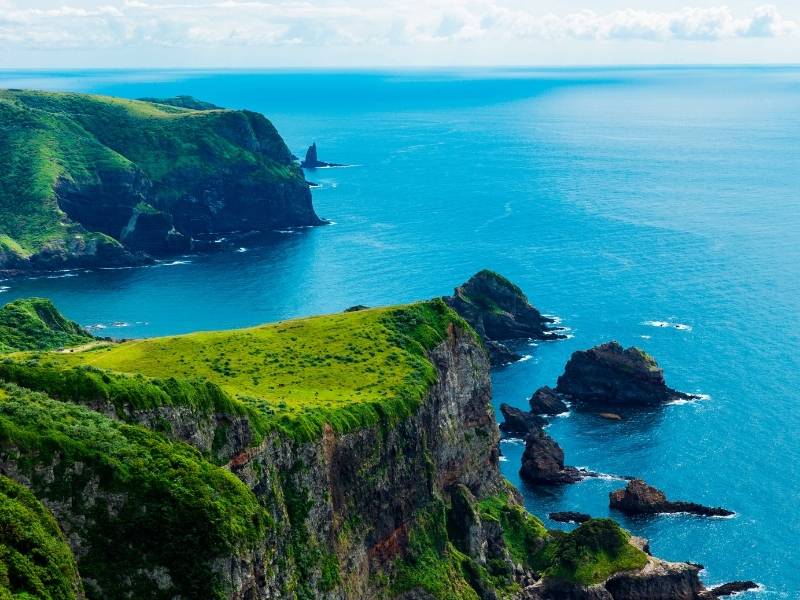
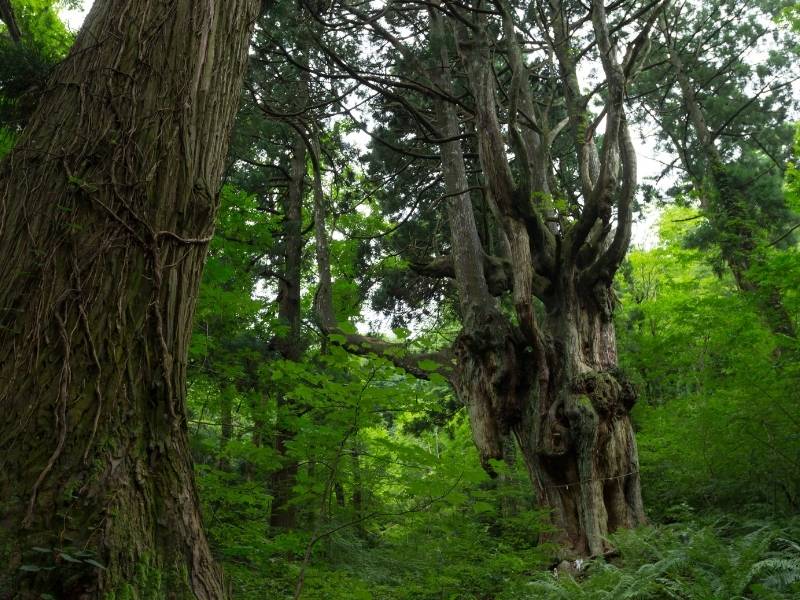
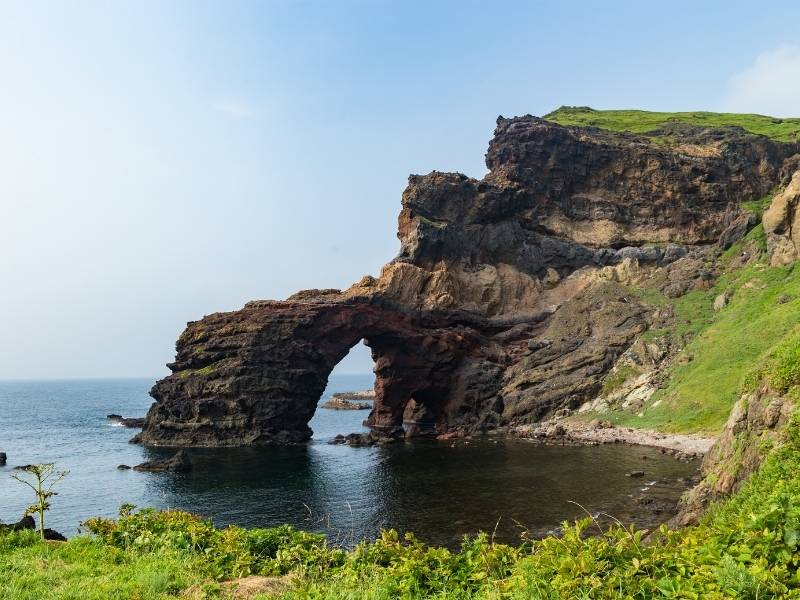
Location: Oki Islands
Located 80 kilometers (49.7 miles) from the north coast of Shimane Prefecture, we can discover a small group of islands known as the Oki Islands. These islands are packed with some of the most unusual sights in Japan.
Commonly referred to as Okishima, this archipelago is blessed with mystical forests populated by Japanese cedars. The islands also boast stunning natural scenery, blanketed in grass and dotted with cattle.
The Oki Islands are also celebrated for their scenic views of ocean cliffs and rock formations. Due to their overall beauty, they have been recognized as a UNESCO Global Geopark.
These islands serve as an excellent destination in Japan for those looking to experience nature and the Japanese countryside, complemented by the sea.
Susa Hornfels
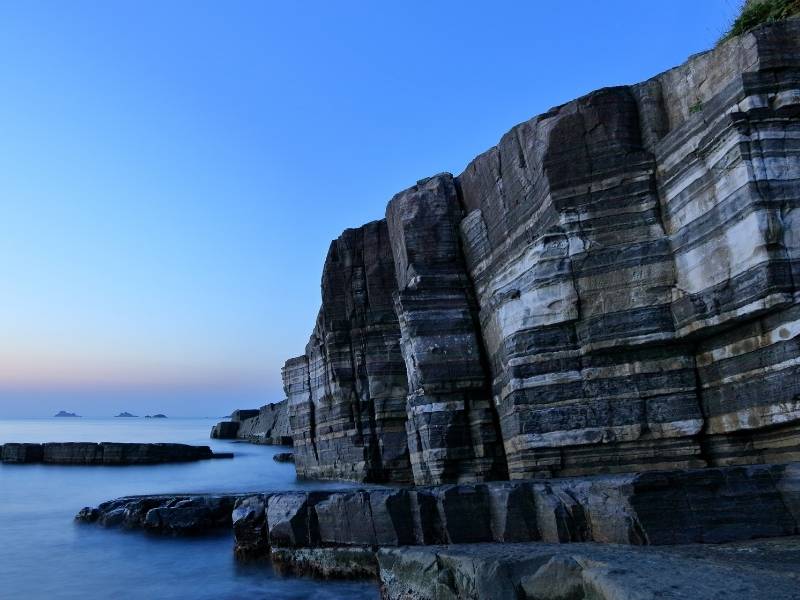
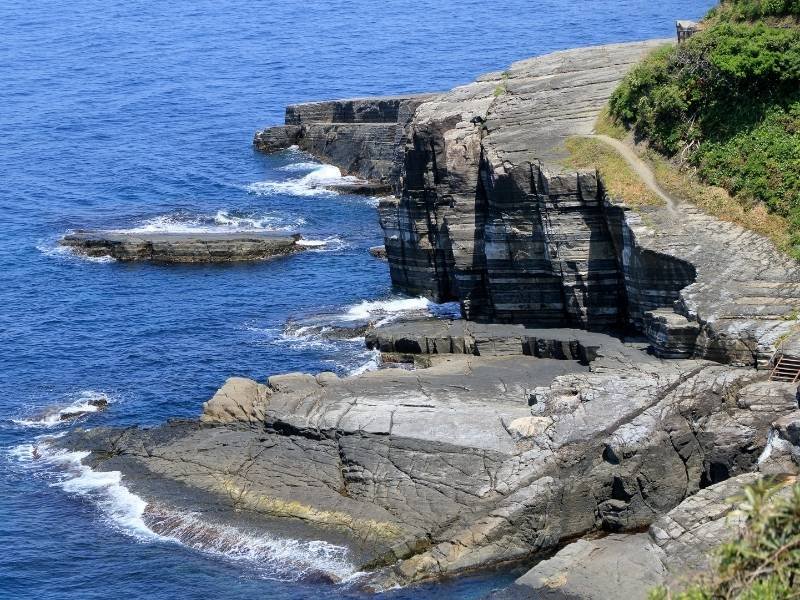
Location: Yamaguchi, Hagi, Susa, Koyama
There are places on earth that are full of unbelievable spectacles, such as the Susa Hornfels in Yamaguchi. This rock formation might make you think it was crafted by humans.
It’s hard to imagine that despite nature’s unpredictability and chaos, it has still designed such beautiful patterns that we now admire. Susa Hornfels is a stunning cliff with alternating layers of rocks in black and gray colors.
It is recognized as one of the 100 Places of Scenic Heritage in Japan in the 21st century, and also one of the 100 Geological Features of Japan. Scientists believe that Susa Hornfels was created 140,000,000 years ago by geologic forces, heat, and pressure under the earth’s crust.
Looking at these rocks is like traveling back in time to a world that was vastly different from what we know today.
Natural Wonders of Japan to see in the Shikoku Region
Shikoku, one of Japan’s five major islands, is also recognized as a distinct region in the country. Positioned to the east of Chugoku, it’s accessible via an extensive network of roads and trains.
Despite being the second smallest of Japan’s major islands, Shikoku holds its own with a collection of remarkable natural attractions that are worth capturing on camera. In my view, the natural wonders that should not be missed here include the Omogo Gorge, Chichibugahama Beach, and Tatsukushi Coast.
More information about Shikoku Region
Shikoku, the smallest of Japan’s four main islands, is known for its varied landscapes and deep-rooted cultural heritage. The island, stretching 225 km in length and varying between 50 to 150 km in width, is nestled south of Honshu and northeast of Kyushu.
The region is divided into four distinct prefectures: Ehime, Kagawa, Kōchi, and Tokushima. Each of these prefectures offers its own unique attractions. Shikoku’s terrain is predominantly mountainous, with the majority of the population residing in coastal urban areas.
Agriculture is a key aspect of Shikoku’s identity. The primary crops include rice, barley, wheat, and mandarin oranges. The region’s economy is further strengthened by a thriving fishing industry and salt production derived from seawater evaporation.
Omogo Gorge
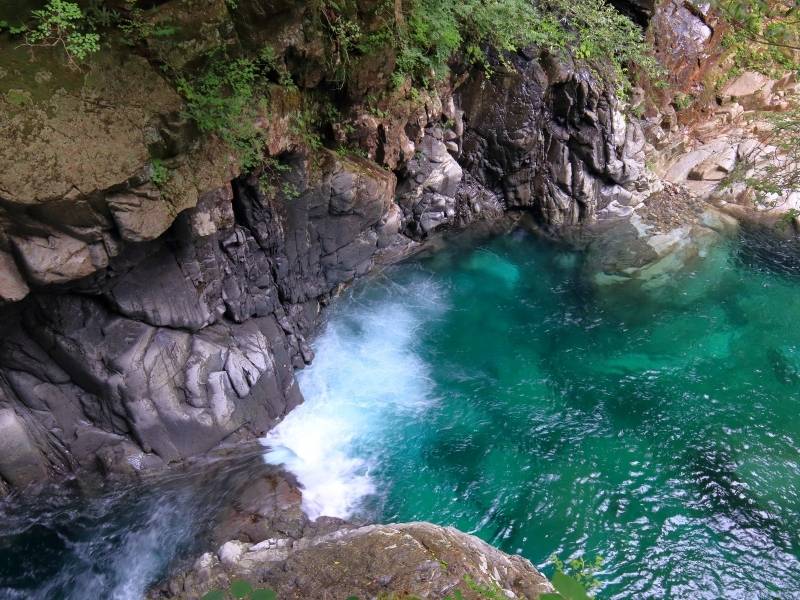
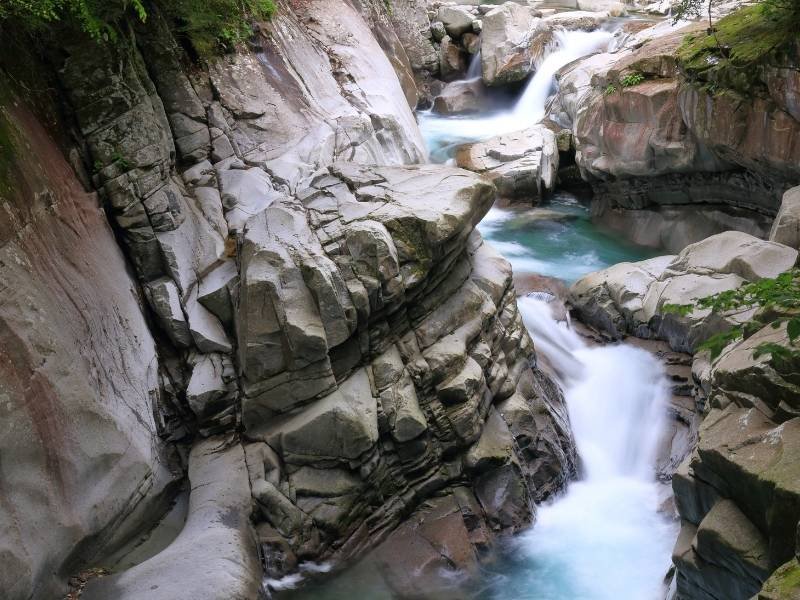
Location: Wakayama, Kumakogen, Kamiukena District, Ehime
At the foot of the highest mountain in Western Japan lies a 10-kilometer (6.2 miles) V-shaped gorge, renowned for its seasonal beauty. This national scenic sight boasts crystal clear blue waters and vibrant autumn foliage that comes alive in early November.
The gorge is a popular spot in the Shikoku Region for those seeking relaxation and a connection with nature. Within the Omogo Gorge, there are two trails: the Honryu Route and the Teppo Route.
The Honryu Route leads visitors to scenic spots such as Toraga-Taki, Mmmiji-Kogen, and Goshiki-Kawara. On the other hand, the Teppo Route follows a trail along the tranquil Teppo River, offering a peaceful experience for visitors.
Chichibugahama Beach
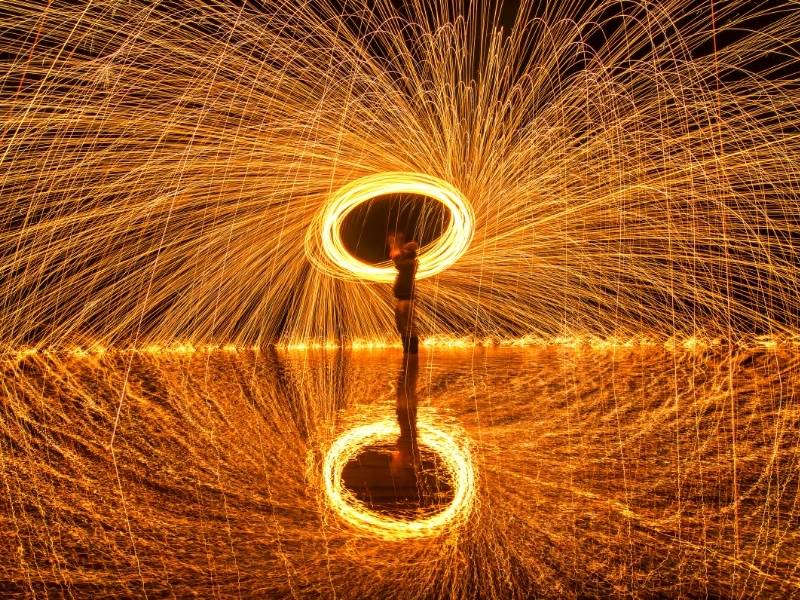
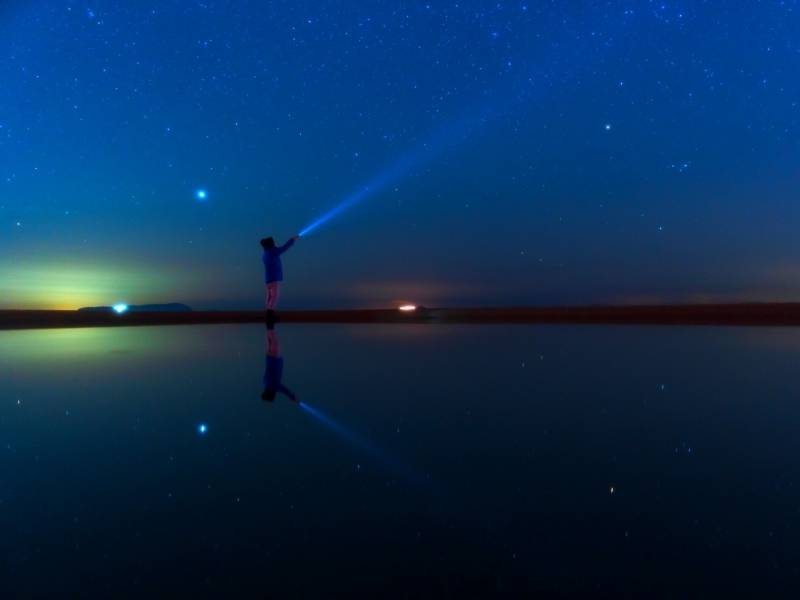
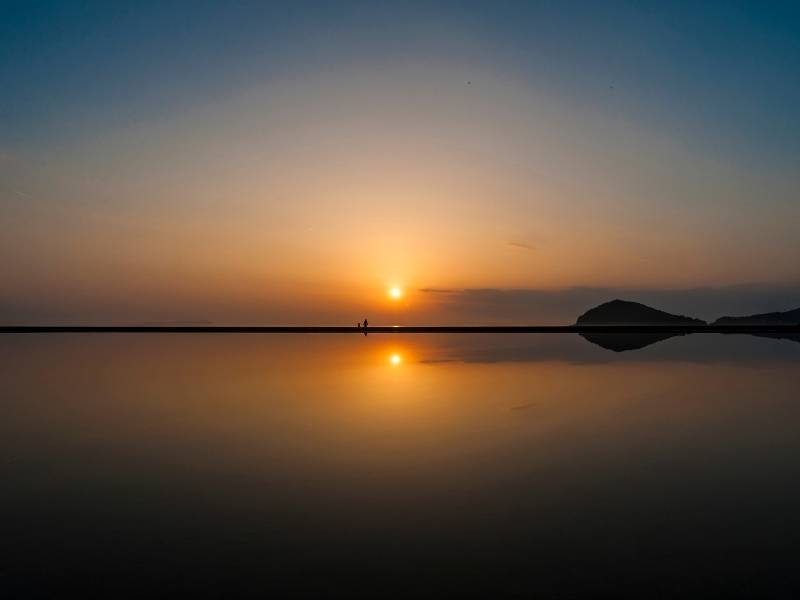
Location: Otsu Niocho Nio, Mitoyo, Kagawa
One of the places in the world I am eager to visit is the Salar de Uyuni in Bolivia, known as the “largest” natural mirror on Earth. Interestingly, Japan has its own version of the Salar de Uyuni, called Chichibugahama Beach.
Chichibugahama Beach is one of the most picturesque locations in Japan for watching the sunset. The sun and the colors of the sky are perfectly reflected on the water, creating a breathtaking view. This is why Chichibugahama Beach has been included in the Top 100 Sunset Spots in Japan.
However, it’s important to note that this stunning scene does not occur at all hours of the day. The mirror-like effect appears during low tide when the seawater recedes, revealing a sandy portion of the beach and transforming parts of the beach into pools.
The sand acts as a barrier to the sea waves, calming the saltwater trapped within the sands and creating a giant natural mirror. This mirror effect only occurs when there is no strong wind disturbing the stillness of the trapped seawater in the sands.
Tatsukushi Coast
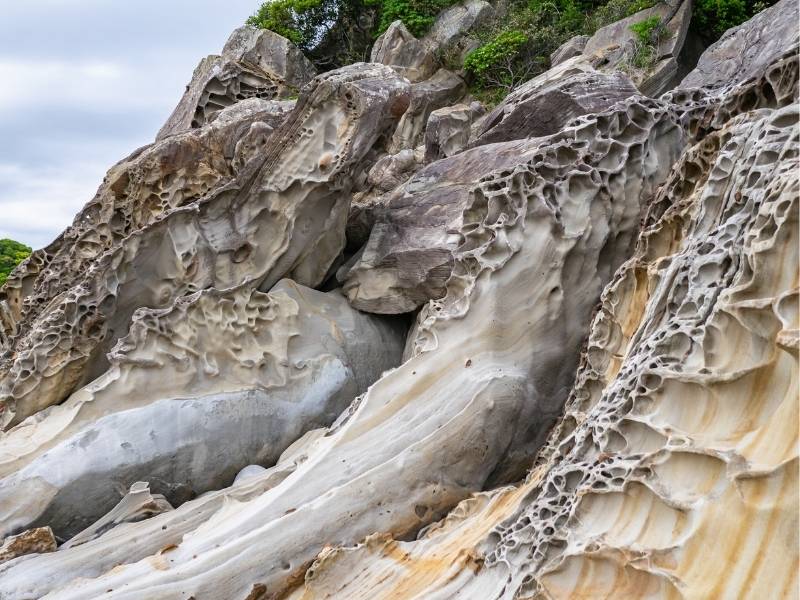
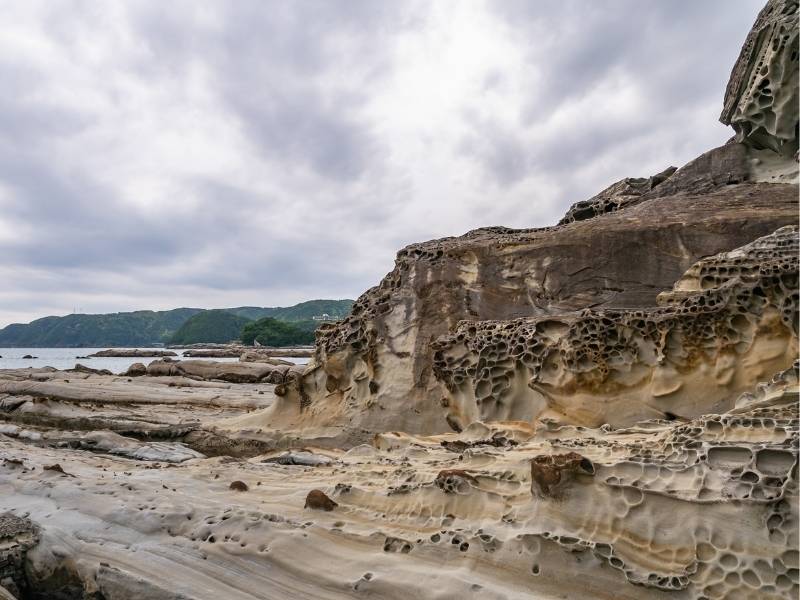
Location: Tatsukushi, Tosashimizu, Kochi
Japan has its own miniature version of another famous location, Taiwan’s Yehliu Geopark. This is a place known for its unusual rock formations, which are the result of sea erosion.
The Japanese counterpart of the Geopark is the Tatsukushi Coast. Here, you can find oddly shaped rocks that began their formation between 20 million and 15 million years ago.
Some of the rock formations on this coast might unsettle people with trypophobia. Take note of the weathering that has occurred on the rocks. Whether you find them fascinating or intimidating, they are safe to visit. Rest assured, nothing will emerge from the holes when you touch them.
Consider bringing some friends along and discover different rock formations that resemble real-world objects. It’s an adventure waiting to happen!
Japanese Natural Wonder in Kyushu Region
We’ve now reached the final part of our journey through Japan, the southernmost region of Kyushu. While it may be last, it is certainly not least. In fact, there is no “least” in Japan; every place is either stunning or awe-inspiring!
Like Shikoku, Kyushu is also an “island region” in Japan. Or perhaps, “archipelagic region” would be a more fitting term. Regardless of the terminology, two things are certain. The region is volcanically active, and it is dotted with numerous islands that make for perfect getaway adventures!
Now, let’s explore the must-see natural attractions that await us in the Kyushu region. These include the breathtaking Takachiho Gorge and the mesmerizing Gyukusendo Cave.
More information about Kyushu Region
Kyushu, ranking as the third largest among Japan’s four main islands, is also known for its diverse landscapes and rich cultural history.
The region is segmented into seven unique prefectures: Fukuoka, Saga, Nagasaki, Kumamoto, Oita, Miyazaki, and Kagoshima. Each prefecture presents its own distinctive attractions. The terrain of Kyushu is primarily mountainous, with a large portion of the population living in coastal urban areas.
Agriculture significantly contributes to the identity of Kyushu. The main crops grown include rice, tea, and citrus fruit. The economy of the region is further fortified by a strong fishing industry.
Internationally, Kyushu is known for its tonkotsu ramen, diverse hot springs, striking mountains, and serene beaches. The island serves as Japan’s gateway, being the closest island to the Asian continent.
Takachiho Gorge


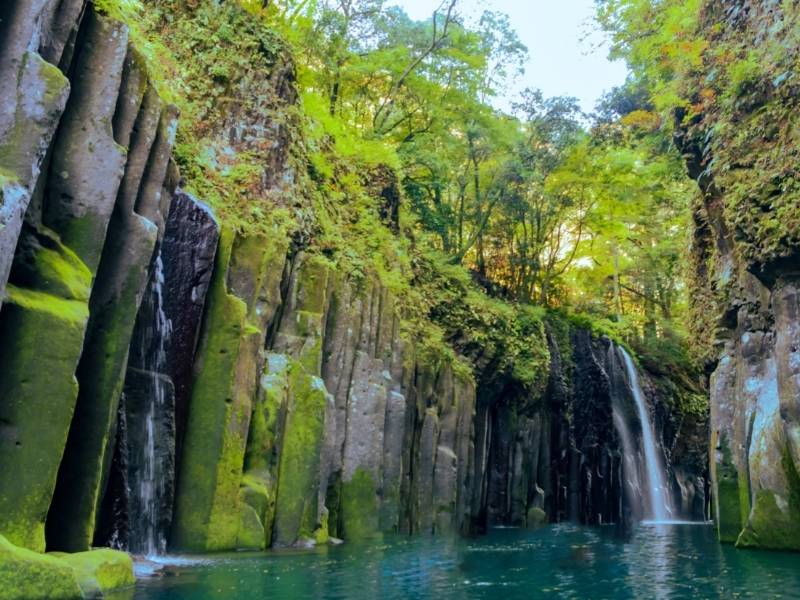
Location: Mukoyama, Takachiho, Nishiusuki District, Miyazaki
Takachiho Gorge is one of the most photogenic gorges in Japan. The structure of the rocks that form the walls of the Gokase River in Takachiho Gorge is awe-inspiring. The gorge appears to be a man-made canal, but it was actually crafted by nature alone.
The captivating canyon cliffs are composed of slow-forming volcanic basalt that solidified countless years ago during the formation of the Earth’s crust. Some people liken these formations to the scales of a dragon, a comparison that I find quite fitting.
Adding to the gorge’s fascination is the 17-meter tall Minainotaki waterfall located in the middle of the canyon. The surrounding lush vegetation enhances the overall scenery of the waterfall.
The canyon can be explored by boat or by hiking along the paved path that winds through the area. However, if you wish to see the intricate details of the canyon walls up close, a boat trip is recommended.
Gyukusendo Cave
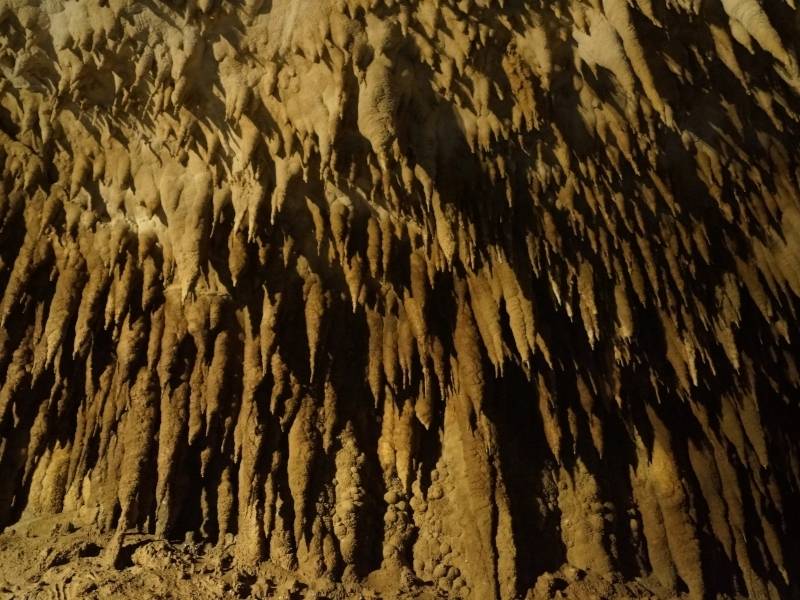
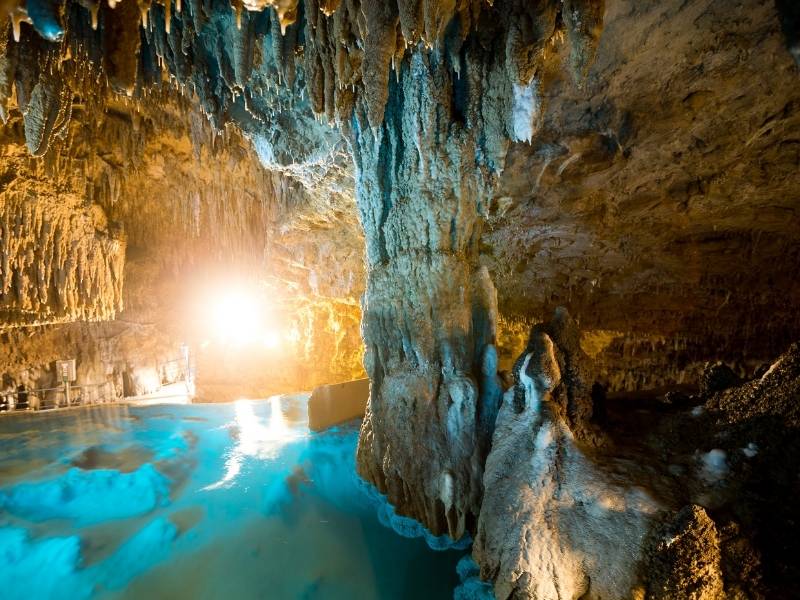
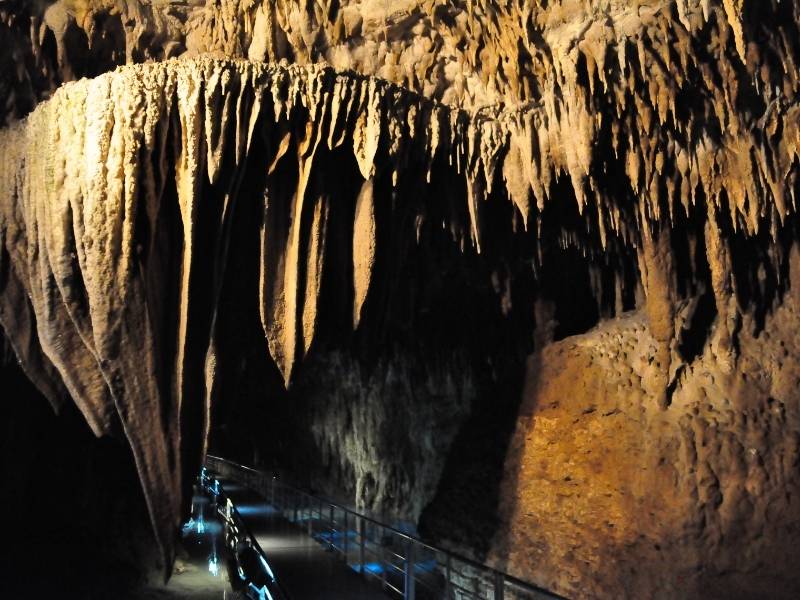
Location: Tamagusuku, Nanjo, Okinawa
In the southernmost Okinawa prefecture, there lies a fantastic cave that is sure to astound you, even if you’re already underground! The caves are otherworldly, always surprising with their surreal beauty.
Despite being on a small island, the Gyukusendo Cave in Okinawa is the second-longest cave in Japan. It spans a total length of 5 kilometers (3.1 miles), but only 850 meters (2788 ft) is open to the public.
For over 300,000 years now, the cave has been forming stunning stalactites and stalagmites. What makes them even more fascinating is that it is actually a limestone cave that has grown on a coral reef!
You don’t have to worry about tripping over a rock or needing to bring a flashlight inside. The cave is well maintained with paved paths and is well lit throughout.
There are three famous parts of the cave that you should not miss: the Blue Fountain, the Ceiling of Spears, and the Squeezing Curtain.
Save it on Pinterest.
